Western Australia is home to an abundance of fascinating bird species, with an estimated 500 species calling this vast region home. From the stunning emerald green wings of the rainbow lorikeet to the striking black and white feathers of the wedge-tailed eagle, each bird species in Western Australia brings its unique charm and charisma to the region.
With diverse habitats ranging from the vast deserts of the outback to the lush forests and coastline, Western Australia offers a wide range of opportunities for birdwatchers and wildlife enthusiasts alike to observe and appreciate the magnificent birds living within its borders.
This article will explore the different bird species living in Western Australia, their unique characteristics, habitats, and the conservation effort underway to protect their populations.
1. Laughing Dove
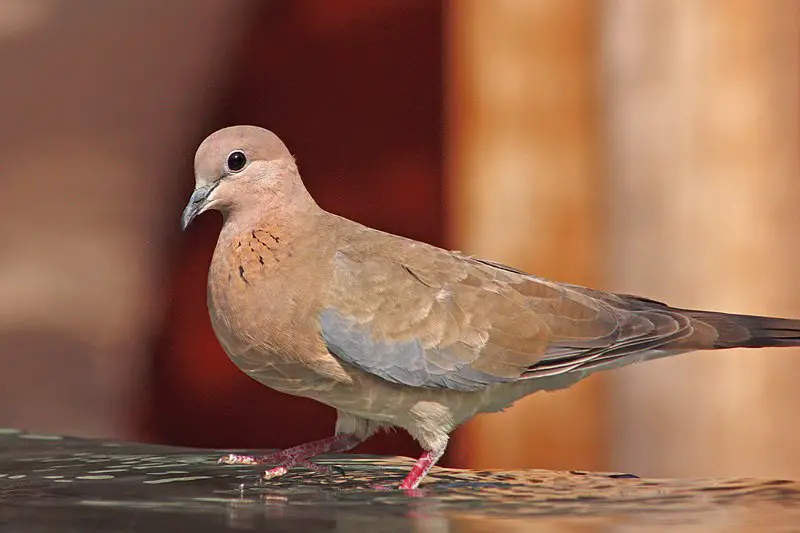
The Laughing Dove is a small and long-tailed pigeon found in dry, scrubby or semi-desert habitats. These birds are native to Africa, the Middle East, South Asia and Western Australia where they were released from Perth Zoo in 1898.
A unique feature of these doves is their call which sounds like low laughter – hence its name.
They form pairs when feeding on the ground, often near water sources such as pools or riverbanks. The diet of this bird consists mainly of seeds with some invertebrates also taking up part of it.
This species has adapted well to different environments due to its ability to find food resources easily even during times when other foods may be scarce.Scientific classification:
| Kingdom | Animalia |
| Phylum | Chordata |
| Class | Aves |
| Order | Columbiformes |
| Family | Columbidae |
| Genus | Spilopelia |
| Species | S. senegalensis |
Also Featured In: Egyptian Birds, Delhi Birds You Need to See
2. Black Swan
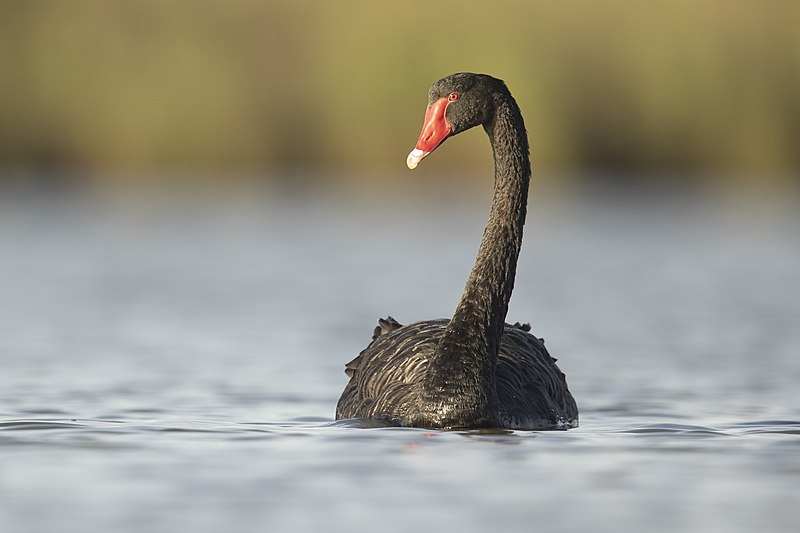
The Black Swan is a beautiful species of swan found in many parts of Australia. It has black plumage and a bright red bill, making it quite distinctive from other birds in the region.
These majestic birds are monogamous and both parents take turns incubating eggs as well as raising cygnets together.
They have an erratic migration pattern that depends on climatic conditions, although they usually move within their native range to find suitable habitats for breeding and feeding purposes.
The Black Swan’s graceful presence adds beauty to any water body they inhabit while also serving as important indicators of environmental health due to their sensitivity towards changes in their habitat quality.Scientific classification:
| Kingdom | Animalia |
| Phylum | Chordata |
| Class | Aves |
| Order | Anseriformes |
| Family | Anatidae |
| Genus | Cygnus |
| Species | C. atratus |
Also Featured In: Most common birds in Australia,
3. Rainbow Bee-Eater
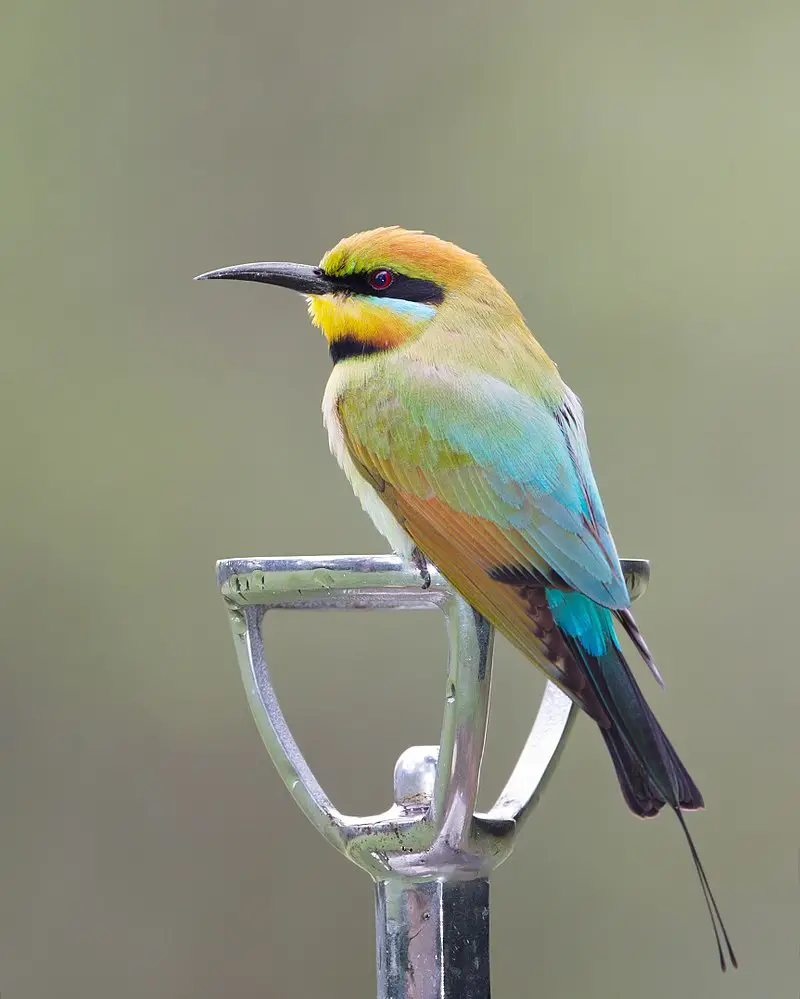
The Rainbow bee-eater (Merops ornatus) is a delightful near passerine bird belonging to the bee-eater family Meropidae.
It is found exclusively in Australia, making it one of only two species of its kind throughout the world; its closest relative being located in Southern and Eastern Africa – the olive bee-eater (Merops superciliosus).
Its stunning plumage features a unique palette of colours including shades pinkish reds, blues, greens and yellows which make for an impressive display when seen up close.
Due to their diet consisting mainly on bees and other insects they have adapted specialised beaks with serrated edges that allow them to easily capture their prey mid flight.
A truly remarkable sight indeed.Scientific classification:
| Kingdom | Animalia |
| Phylum | Chordata |
| Class | Aves |
| Order | Coraciiformes |
| Family | Meropidae |
| Genus | Merops |
| Species | M. ornatus |
Also Featured In: Birds that Found in Kakadu National Park, Birds of Far North Queensland
4. Malleefowl
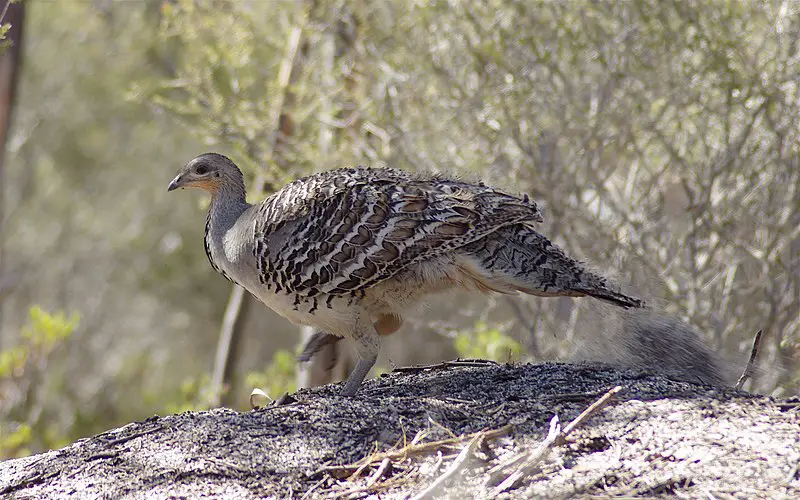
Malleefowl are native to Australia and resemble a domestic chicken in size. They prefer open woodlands or grassy plains with plenty of shrubs for cover.
These birds live on the ground and almost never fly, but their strong legs allow them to run quickly over short distances.
The males build large nesting mounds every year where they lay eggs which hatch without parental care from either parent.
Though only one species of malleefowl still exists today, its close relative was once much larger before becoming extinct.
This unique bird is an important part of Australia’s wildlife heritage that should be protected and appreciated by all Australians.Scientific classification:
| Kingdom | Animalia |
| Phylum | Chordata |
| Class | Aves |
| Order | Galliformes |
| Family | Megapodiidae |
| Genus | Leipoa Gould, 1840 |
| Species | L. ocellata |
5. New Holland Honeyeater
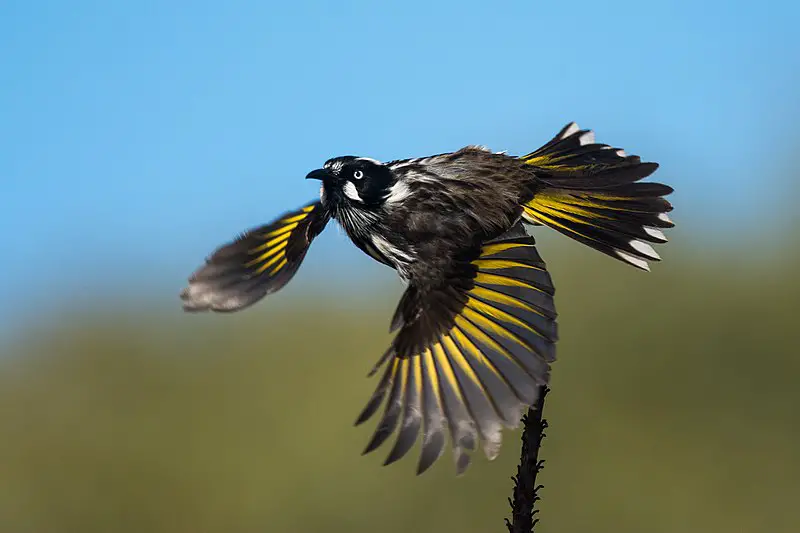
The New Holland honeyeater is a distinctive bird found in southern Australia. It has five subspecies and measures 18 cm long, with mainly black feathers contrasting against its white eyes.
This species was among the first to be scientifically described in Australia, known as Certhia novaehollandiae at that time.
These birds are very active and can often be seen searching for food or bathing on hot days near water sources such as streams or lakes.
They have an impressive range of vocalizations which they use to communicate with each other when looking for mates or defending their territories from intruders.
The New Holland Honeyeaters feed primarily on nectar but also consume insects, lizards, spiders and seeds when available throughout the year – making them essential pollinators within Australian ecosystems.Scientific classification:
| Kingdom | Animalia |
| Phylum | Chordata |
| Class | Aves |
| Order | Passeriformes |
| Family | Meliphagidae |
| Genus | Phylidonyris |
| Species | P. novaehollandiae |
6. Night Parrot
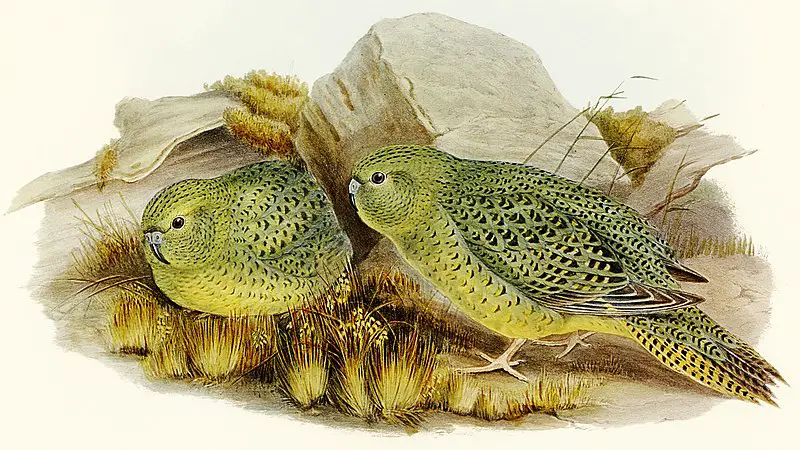
The Night Parrot is one of the most mysterious birds on Earth due to its extreme elusiveness. It is a small parrot endemic to Australia and can also be known as porcupine parrot, nocturnal ground parakeet, midnight cockatoo, solitaire, or spinifex parrot.
For 67 years there were no confirmed sightings of this bird until 1979 when it was rediscovered in western Queensland.
Its secretive behavior makes it difficult for humans to observe these creatures properly and many attempts have been made by researchers over the decades ever since then in order try get more information about them but with limited success so far.
The future looks uncertain for these special creatures however hopefully through continued research we will find out much more about them soon.Scientific classification:
| Kingdom | Animalia |
| Phylum | Chordata |
| Class | Aves |
| Order | Psittaciformes |
| Family | Psittaculidae |
| Genus | Pezoporus |
| Species | P. occidentalis |
Also Featured In: Birds You’ll Find in Night,
7. Pacific Gull
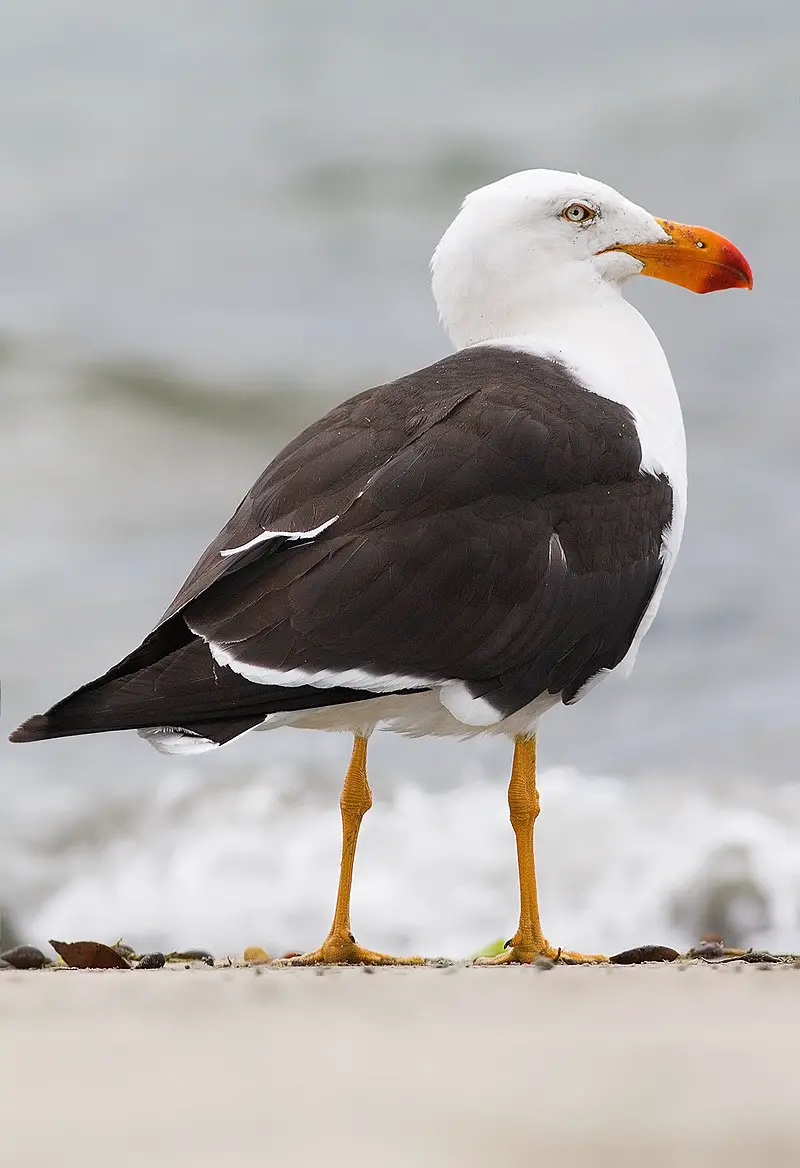
The Pacific gull is a majestic species of bird, native to the coasts of Australia. It stands out among other birds due to its size; it’s much larger than the ubiquitous silver gull and can reach up to 70cm when fully grown.
Unfortunately, this magnificent species has become scarce in some areas of south-east Australia as a result of competition from kelp gulls that were introduced during the 1940s.
Despite their decline in certain areas, these amazing creatures are still moderately common between Carnarvon and Sydney.
With white plumage on top, grey wings and black legs they make for quite an impressive sight.Scientific classification:
| Kingdom | Animalia |
| Phylum | Chordata |
| Class | Aves |
| Order | Charadriiformes |
| Family | Laridae |
| Genus | Larus |
| Species | L. pacificus |
8. Carnaby’s Black Cockatoo
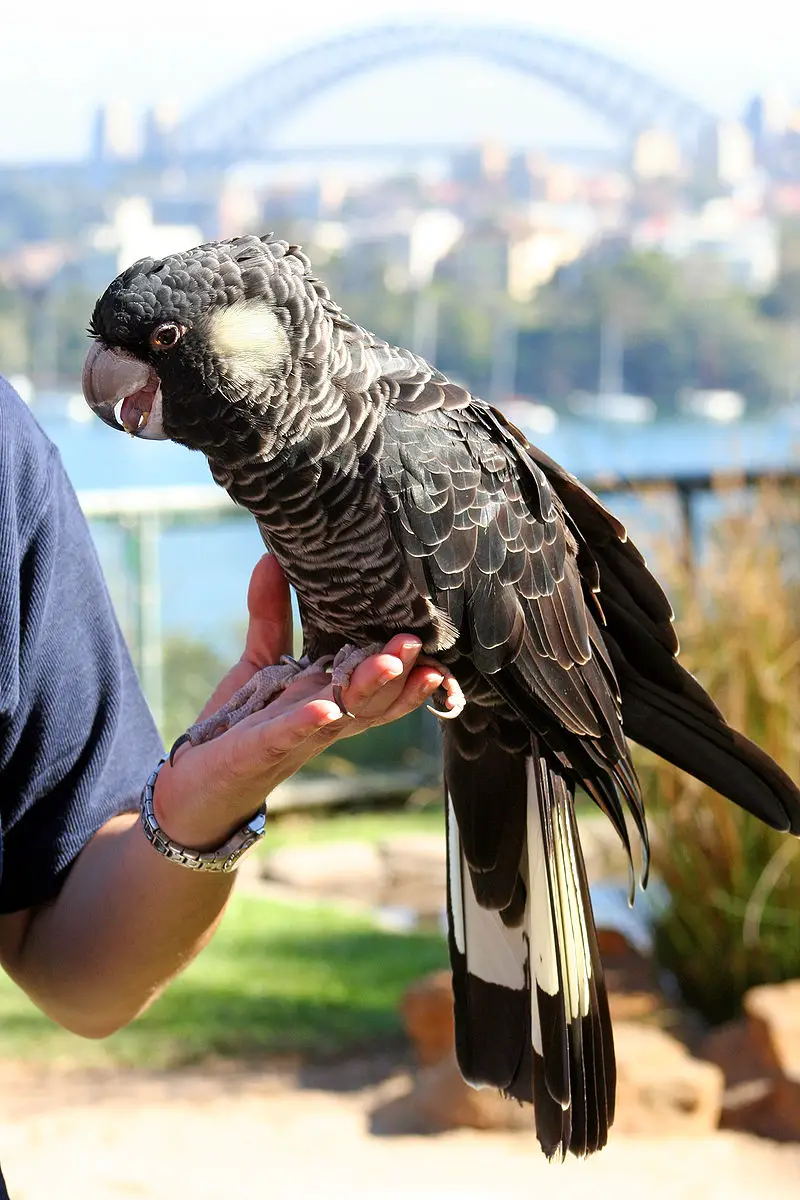
Carnaby’s black cockatoo is a large, stunning bird native to southwest Australia. Measuring 53-58 cm in length and with an unmistakable short crest on its head, the striking plumage of this species consists mostly of greyish black feathers.
It also has white cheek patches and a distinctive white tail band that makes it stand out from other members of its family.
Carnaby’s black cockatoo loves eating seeds, nuts, insects and flowers; however their numbers have been decreasing due to habitat loss.
Conservation efforts are necessary if we want these remarkable birds to continue living in our world for generations to come.Scientific classification:
| Kingdom | Animalia |
| Phylum | Chordata |
| Class | Aves |
| Order | Psittaciformes |
| Family | Cacatuidae |
| Genus | Zanda |
| Species | Z. latirostris |
9. Silvereye
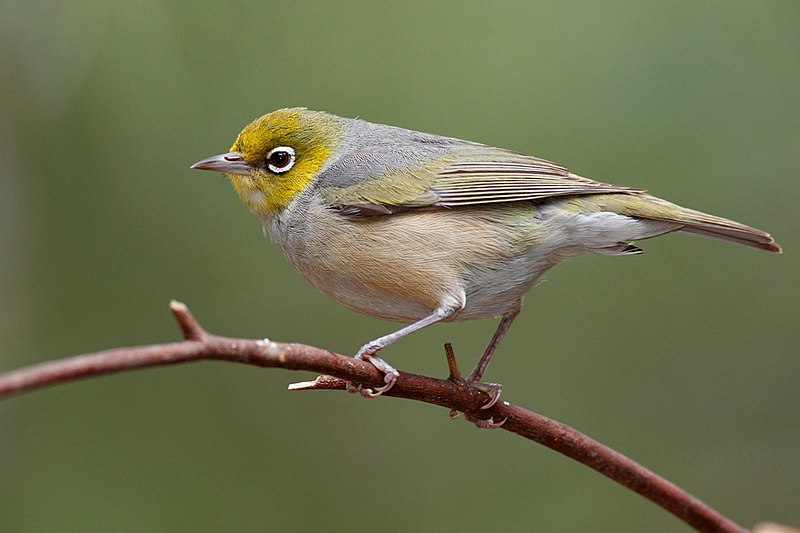
The silvereye, also known as wax-eye, is a tiny passerine bird native to the south-west Pacific region. It was first recorded in New Zealand in 1832 and there were greater numbers by 1856.
These birds are omnivorous feeders that make their home in open woodlands or gardens with lush vegetation.
Their plumage has greyish tones on top of its head and wings giving it a silver sheen look which inspired its common name ‘silvereye’.
The underside of these birds have white feathers allowing for camouflage among foliage when they fly low over shrubs and trees seeking food such as nectar, insects and fruit.
They are social creatures who often flock together to share meals while communicating through their unique chirps.Scientific classification:
| Kingdom | Animalia |
| Phylum | Chordata |
| Class | Aves |
| Order | Passeriformes |
| Family | Zosteropidae |
| Genus | Zosterops |
| Species | Z. lateralis |
Also Featured In: New Zealand Birds, Silver Birds You Should Know
10. Dusky Moorhen
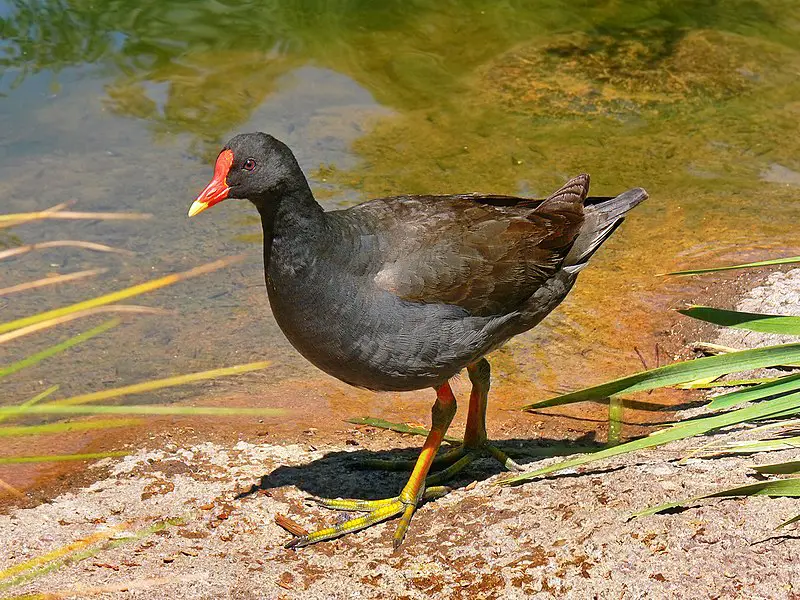
The dusky moorhen is a species of bird found in India, Australia, New Guinea, Borneo and Indonesia. It has dark plumage with an iridescent green sheen on its back and wings.
Its beak and legs are yellow-orange in color. The tail is long and pointed. Dusky moorhens live around freshwater wetlands such as swamps or ponds where they feed largely on aquatic vegetation but may also eat small insects or fish if available.
They often live alongside other birds from the same genus like purple swamphens or Eurasian coots which have similar appearances but different habitats preferences than their own species’.
Although timid when approached by humans these birds still make fascinating subjects for observation due to their unique behaviors within family groups that can help us understand more about them.Scientific classification:
| Kingdom | Animalia |
| Phylum | Chordata |
| Class | Aves |
| Order | Gruiformes |
| Family | Rallidae |
| Genus | Gallinula |
| Species | G. tenebrosa |
Also Featured In: Timor-Leste birds,
11. Shining Bronze Cuckoo
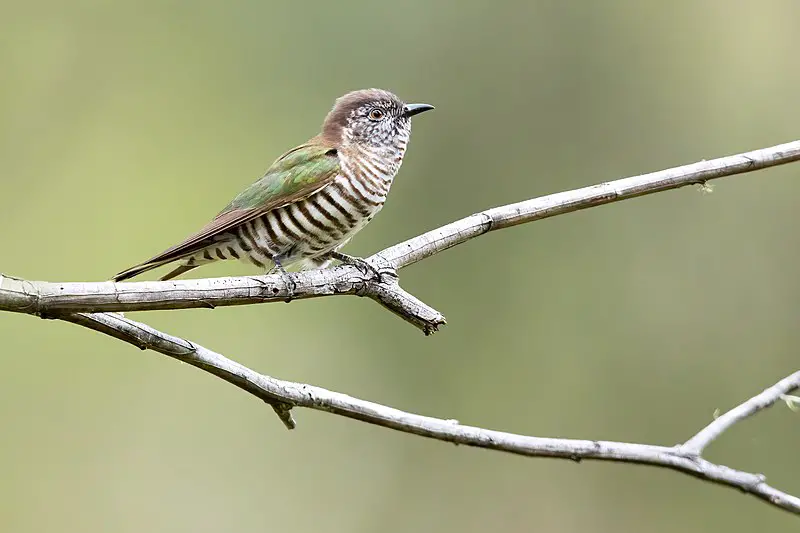
The Shining Bronze Cuckoo is a species of cuckoo found in many areas, including Australia, Indonesia and New Zealand.
It is quite small – only 13 to 18 cm long – but has beautiful plumage with glossy bronze-green on its upperparts and yellowish underparts.
This bird can be seen foraging in trees or shrubs for insects before returning back to its nest which it usually parasitises from other Gerygone species.
Its call consists of harsh croaks followed by an ascending whistle ‘kweeo’.
The diet primarily consists of beetles and caterpillars as well as fruits like figs depending on the season.
They are solitary birds that migrate over short distances during winter months while they largely remain sedentary throughout summer breeding periods when their numbers increase significantly due to nesting activity among tree branches near water sources such as rivers and swamps.Scientific classification:
| Kingdom | Animalia |
| Phylum | Chordata |
| Class | Aves |
| Order | Cuculiformes |
| Family | Cuculidae |
| Genus | Chrysococcyx |
| Species | C. lucidus |
12. Black-Browed Albatross
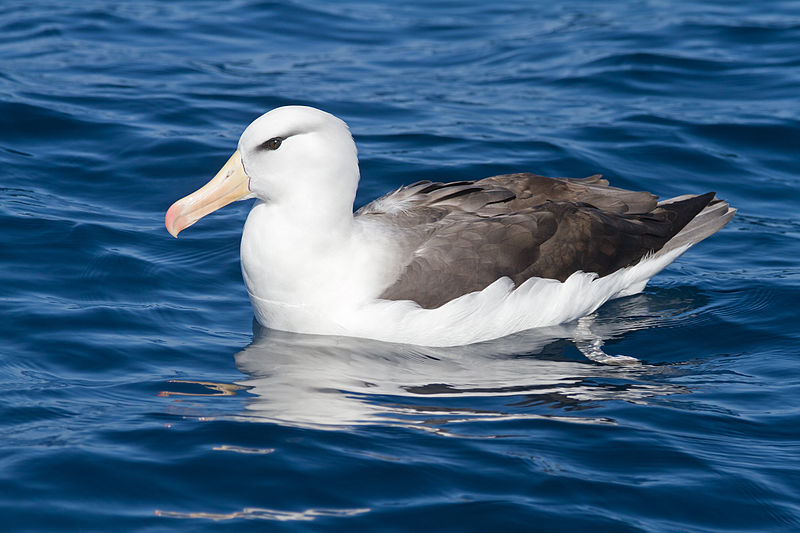
The Black-browed Albatross is a majestic seabird that belongs to the albatross family known as Diomedeidae.
It is an impressive bird, with its black beak and brow contrasting against white plumage on its wings and body.
The most widespread and common member of this group, it can often be seen flying around oceans in different parts of the world.
These birds share many features with other members of their order Procellariiformes, such as shearwaters, fulmars, storm petrels and diving petrels; they all have long wingspans for gliding effortlessly above water surfaces.
They feed mainly by scavenging or hunting small fish near sea surface while flying low over waters.
Its population has unfortunately declined due to commercial fishing vessels which attract them closer to shore resulting in entanglement into fishing nets leading them towards mortality.Scientific classification:
| Kingdom | Animalia |
| Phylum | Chordata |
| Class | Aves |
| Order | Procellariiformes |
| Family | Diomedeidae |
| Genus | Thalassarche |
| Species | T. melanophris |
Also Featured In: Antarctica Birds, Most Common Birds in South America Birds
13. Silver Gull

The Silver Gull is a common sight in Australia, especially along the coastlines. It’s smaller than the Pacific Gull and has silver-grey wings with white head and underparts.
Its scientific name is Chroicocephalus novaehollandiae, but it shouldn’t be confused with the Herring Gull which is also called “Silver Gull” in many other languages (Larus argentatus).
During summer months these birds can often be seen around fishing boats scavenging for discarded food or flying low over city parks looking for handouts from humans.
They are highly adaptable to their environment making them quite successful at coexisting near human populations.
These Australian seabirds have been known to live up to 25 years old.Scientific classification:
| Kingdom | Animalia |
| Phylum | Chordata |
| Class | Aves |
| Order | Charadriiformes |
| Family | Laridae |
| Genus | Chroicocephalus |
| Species | C. novaehollandiae |
Also Featured In: Gulls Species, Birds that Live around Brisbane
14. Sacred Kingfisher
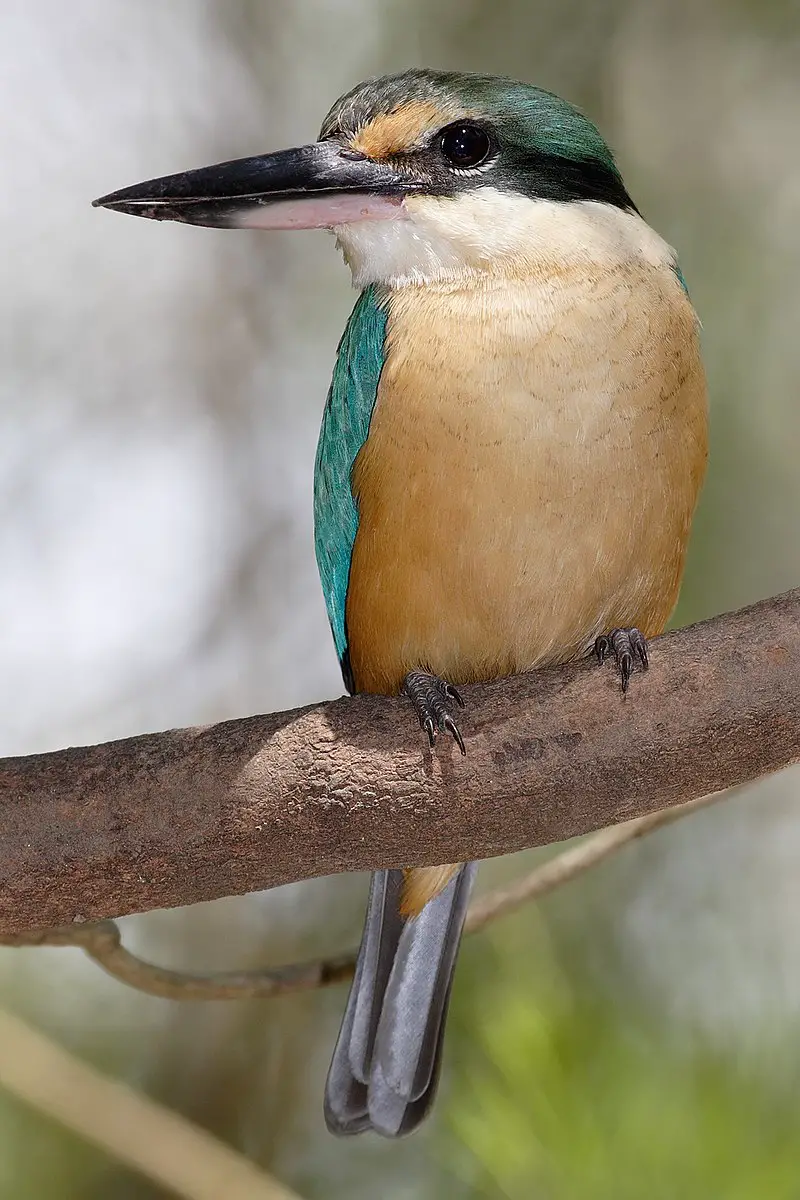
The Sacred Kingfisher is a medium-sized bird found throughout Australia, New Zealand and the western Pacific. It inhabits mangroves, woodlands, forests and river valleys.
Its binomial name Halcyon sanctus was introduced by Nicholas Aylward Vigors and Thomas Horsfield in 1827 when they described an Australian specimen of this species.
The kingfisher has bright blue feathers on its back with striking orange or red underparts depending on their geographical location.
They feed mainly off fish but will also take crustaceans as well as other small aquatic prey like insects.
When breeding season arises these magnificent birds build elaborate nests out of mud pellets inside hollows near water sources making them one of the most unique avian creatures around.Scientific classification:
| Kingdom | Animalia |
| Phylum | Chordata |
| Class | Aves |
| Order | Coraciiformes |
| Family | Alcedinidae |
| Subfamily | Halcyoninae |
| Genus | Todiramphus |
| Species | T. sanctus |
Also Featured In: Kingfishers Species, Queensland Birds You Should Know
15. Blue-Winged Kookaburra
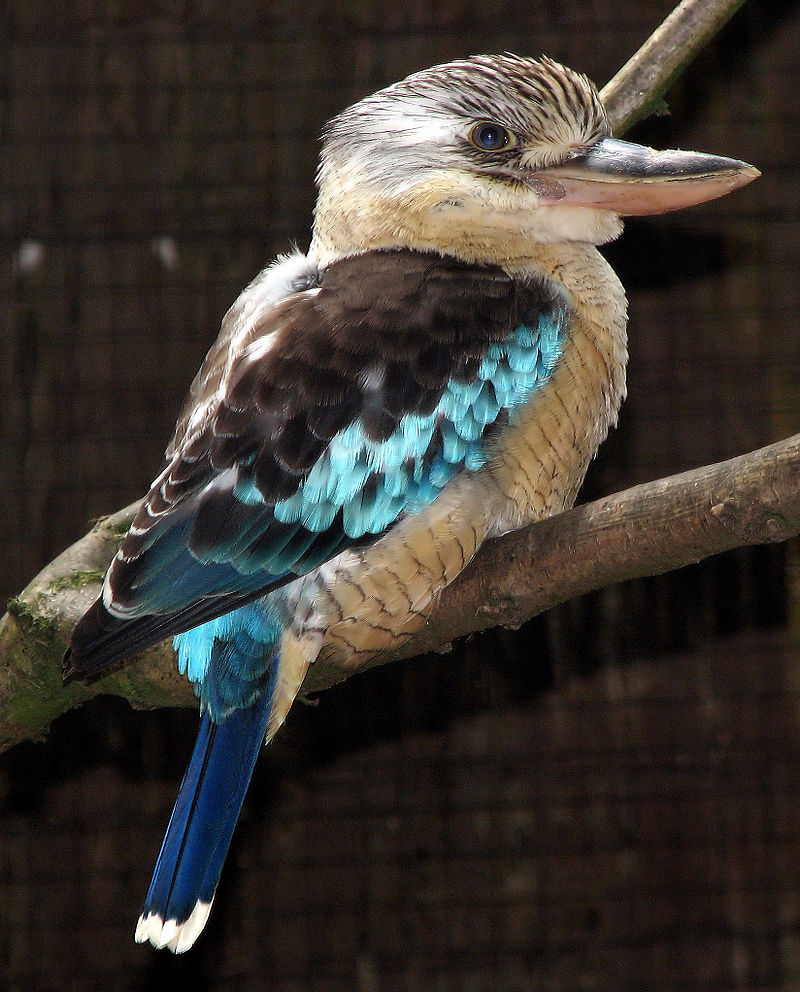
The Blue-winged Kookaburra (Dacelo leachii) is a stunning bird native to northern Australia and southern New Guinea.
It measures around 40 cm, making it slightly smaller than its more well known relative, the laughing kookaburra.
Its plumage varies between cream colouring with brownish bars on its upper and underparts, as well as blue wings and brown shoulders. Additionally, males have a striking blue tail while females lack this feature.
This species of kingfisher feeds mainly on small reptiles such as lizards or snakes but occasionally they will take rodents or even insects.
They can be found in open woodlands near rivers or creeks during the day time where their call – which sounds like laughter – is quite distinct from other birds in the area.Scientific classification:
| Kingdom | Animalia |
| Phylum | Chordata |
| Class | Aves |
| Order | Coraciiformes |
| Family | Alcedinidae |
| Subfamily | Halcyoninae |
| Genus | Dacelo |
| Species | D. leachii |
Also Featured In: Native Birds Of Mackay,
16. Red-Backed Kingfisher
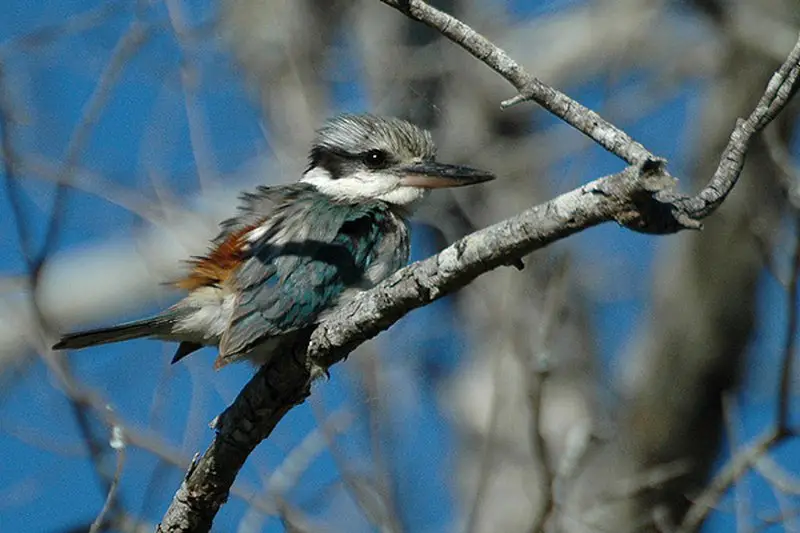
The red-backed kingfisher is a strikingly beautiful bird native to Australia. It has a predominantly blue-green and white body, with its most distinct characteristic being the chestnut rump that runs down its back.
This species of tree kingfisher can be found in drier regions across the continent – from desert areas to open woodlands.
In 1838, it was first described by English ornithologist John Gould who recognized this unique avian for its remarkable plumage and vibrant colors.
The red-backed kingfisher lives near bodies of water where they hunt small fish or insects during their dives into the depths below them.
If you’re lucky enough to spot one while exploring Australia’s outback, take some time to enjoy these stunningly colored birds in all their glory.Scientific classification:
| Kingdom | Animalia |
| Phylum | Chordata |
| Class | Aves |
| Order | Coraciiformes |
| Family | Alcedinidae |
| Subfamily | Halcyoninae |
| Genus | Todiramphus |
| Species | T. pyrrhopygius |
17. Red-Tailed Black Cockatoo
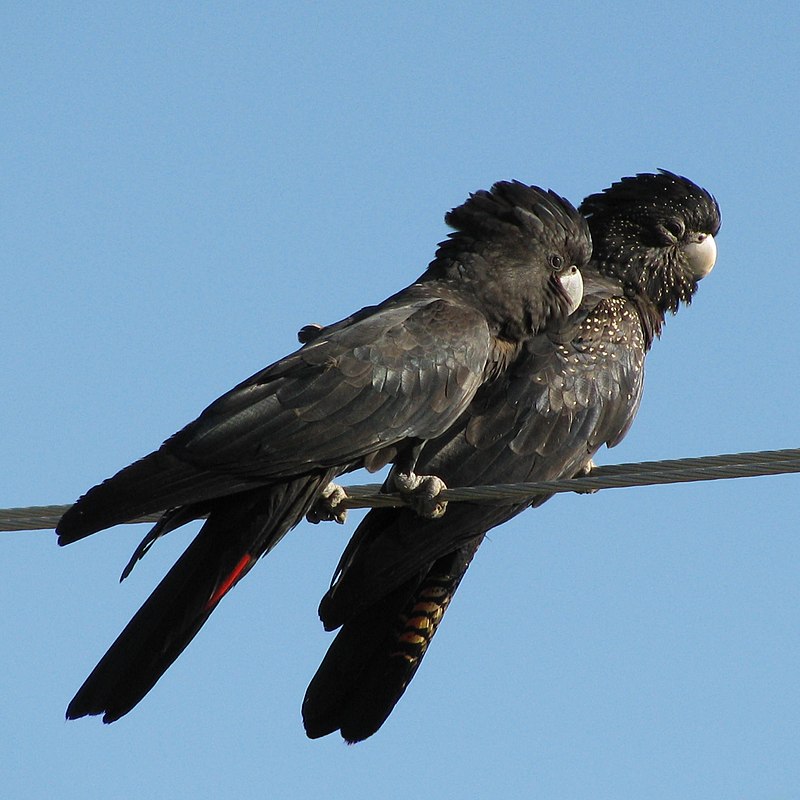
The Red-tailed Black Cockatoo is a majestic bird native to Australian mainland and nearby islands. It has an unmistakable appearance, with its black plumage and bright red tail panels that give it its name.
It thrives in dry environments across the continent, with five distinct subspecies recognized based on their beak size differences.
These birds are also known for their loud calls which can often be heard from miles away.
They love to feed on seeds found in eucalyptus trees and they have strong family bonds where parents will help raise young hatchlings together until they reach adulthood.
The Red-tailed Black Cockatoo is truly a beautiful sight to behold when spotted out in nature.Scientific classification:
| Kingdom | Animalia |
| Phylum | Chordata |
| Class | Aves |
| Order | Psittaciformes |
| Family | Cacatuidae |
| Genus | Calyptorhynchus |
| Species | C. banksii |
Also Featured In: Parrots Species, Birds that You’ll find in Perth
18. Fairy Tern
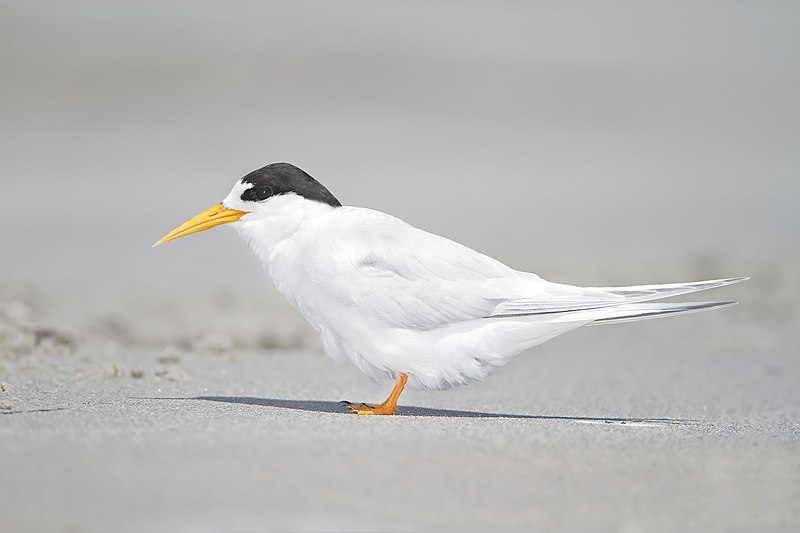
The Fairy Tern is a small tern native to the southwestern Pacific and listed as “Vulnerable” by the IUCN, with its New Zealand subspecies declared critically endangered.
The bird has a white body, light bluish-grey wings, and a black patch which does not extend further than their eye but not quite as far as their bill.
During mating season they develop an attractive breeding plumage of yellow breast feathers and grey legs.
They are able to fly long distances in search for food or migrate during winter months when available resources may be scarce in certain areas.
Despite this amazing ability to adapt however, human activities such as coastal development have caused severe population decline making them highly vulnerable species at risk of extinction without conservation efforts soon being implemented.Scientific classification:
| Kingdom | Animalia |
| Phylum | Chordata |
| Class | Aves |
| Order | Charadriiformes |
| Family | Laridae |
| Genus | Sternula |
| Species | S. nereis |
Also Featured In: Terns Species, South Australian Birds
19. Australian White Ibis
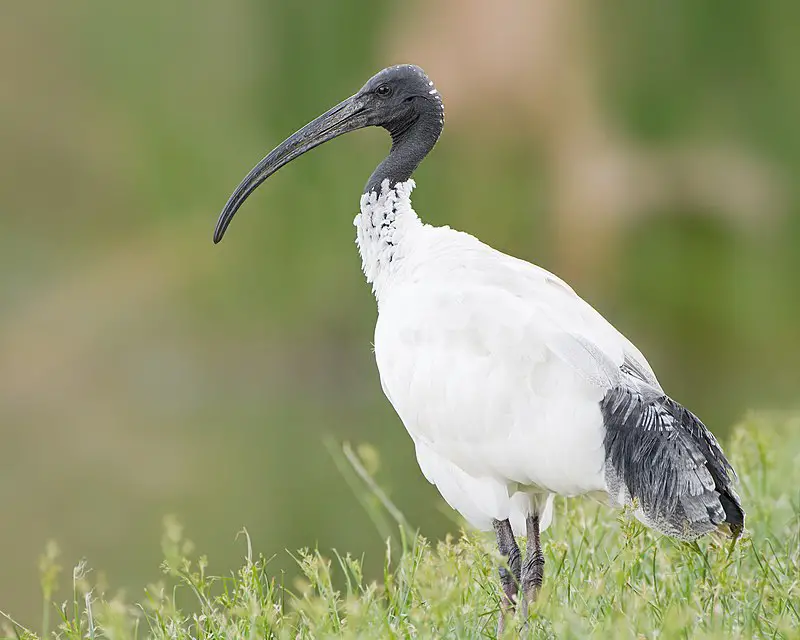
The Australian white ibis is a native wading bird of Australia. With its predominantly white plumage and long downcurved bill, it is easily recognized.
The bird is often found foraging for food on open grasslands, pastures and urban areas such as parks and gardens.
Despite being closely related to the African sacred ibis, the Australian white ibis is a separate species. It has a bare, black head and black legs.
The bird is well adapted to urban environments and often scavenges for food from waste bins or on streets.
While it has been subjected to negative perceptions due to its scavenging behavior, it remains an important member of the Australian ecosystem.Scientific classification:
| Kingdom | Animalia |
| Phylum | Chordata |
| Class | Aves |
| Order | Pelecaniformes |
| Family | Threskiornithidae |
| Genus | Threskiornis |
| Species | T. molucca |
Also Featured In: Water Birds Live around Us, Birds that Live around Victoria
20. Black-Faced Cuckooshrike
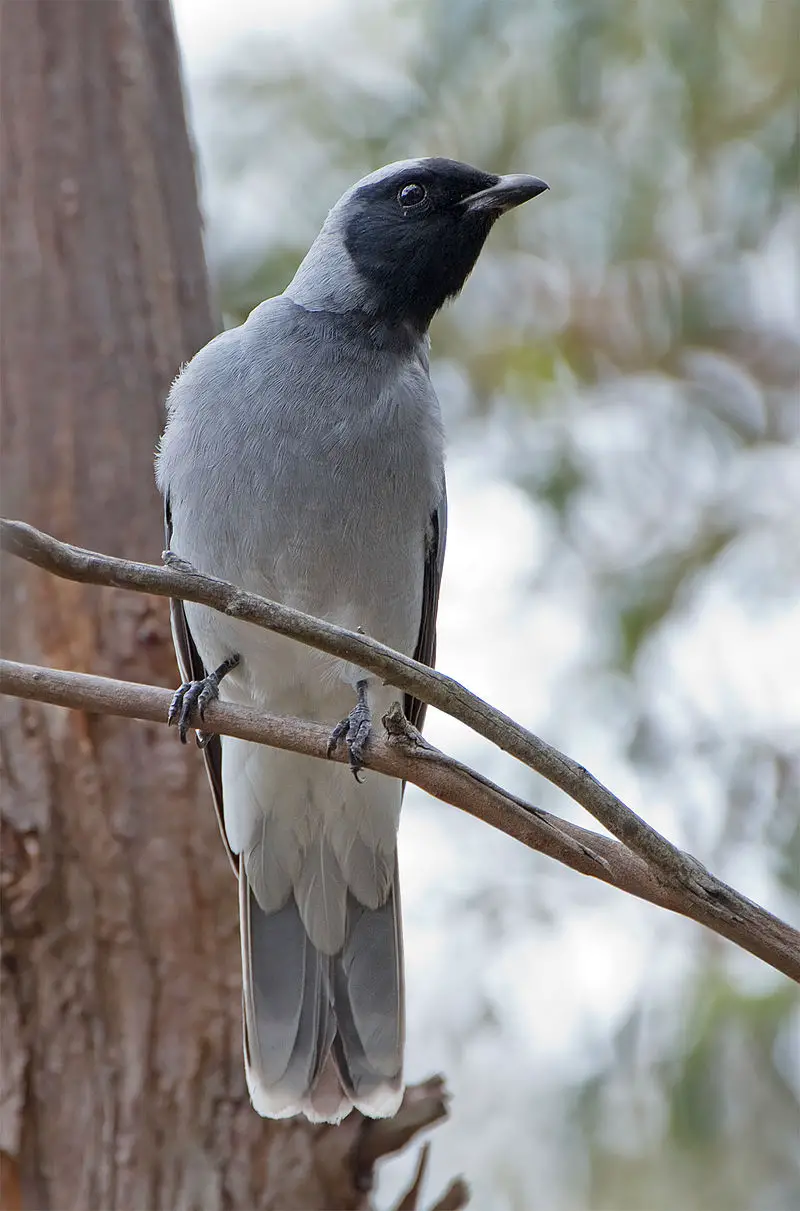
The Black-faced cuckooshrike, found in Australia and southern New Guinea, is a protected species under Australian law.
These birds are omnivorous and commonly seen in wooded habitats, with the exception of rainforests.
Despite this, they are also sometimes found in urban areas. The Black-faced cuckooshrike is a passerine bird and is known for its distinctive black facial markings.Scientific classification:
| Kingdom | Animalia |
| Phylum | Chordata |
| Class | Aves |
| Order | Passeriformes |
| Family | Campephagidae |
| Genus | Coracina |
| Species | C. novaehollandiae |
Also Featured In: Common Melbourne Birds, Birds of Tasmania
21. Short-Tailed Shearwater
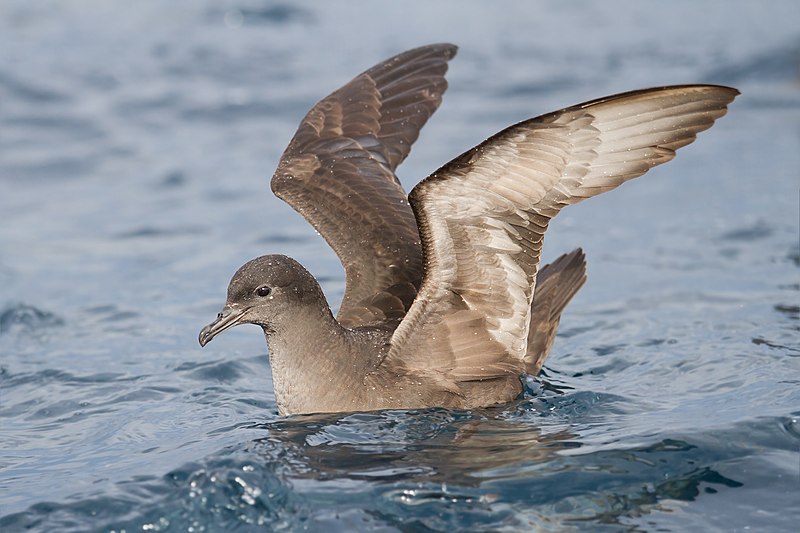
The Short-tailed Shearwater, also known as the Slender-billed Shearwater or Muttonbird, is a migratory seabird species that is native to Australia. It is the most common seabird in Australian waters and is commercially harvested for its chicks.
The bird mainly breeds on small offshore islands and feeds on fish, squid, and zooplankton. Its distinctive call can be heard from far away as it flies low over the ocean.
The Short-tailed Shearwater is an important species for both the ecosystem and the economy, providing food for predators such as foxes and eagles, and supporting a small-scale commercial fishery.
The species faces threats from climate change, pollution, and overfishing, highlighting the need for conservation efforts to protect this important bird.Scientific classification:
| Kingdom | Animalia |
| Phylum | Chordata |
| Class | Aves |
| Order | Procellariiformes |
| Family | Procellariidae |
| Genus | Ardenna |
| Species | A. tenuirostris |
Also Featured In: Birds that Live in the Ocean , Birds that Live near Bering Island
22. Magpie-Lark
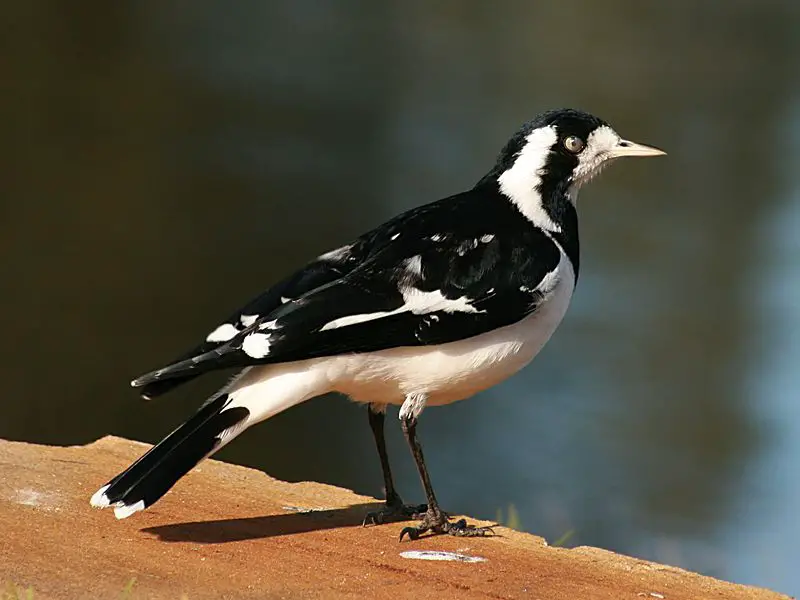
The Magpie-lark is a bird found in Australia, Timor, and southern New Guinea. It has black and white plumage, with different patterns for males and females.
John Latham first described this species in 1801. Formerly known as a mudnest builder, it has been reclassified recently.
The bird has several nicknames such as Wee magpie, Peewee, Peewit, and Mudlark.
It is a passerine bird, and its scientific name is Grallina cyanoleuca. The Magpie-lark is known for its beautiful call, which is similar to the sound “pee-wee.” It is a unique species that adds to the diversity of Australia’s wildlife.
The bird is a favourite among birdwatchers and nature lovers in general.Scientific classification:
| Kingdom | Animalia |
| Phylum | Chordata |
| Class | Aves |
| Order | Passeriformes |
| Family | Monarchidae |
| Genus | Grallina |
| Species | G. cyanoleuca |
Also Featured In: Birds that Charles Darwin Studied, Birds that Live Near Adelaide
23. Canary White-Eye
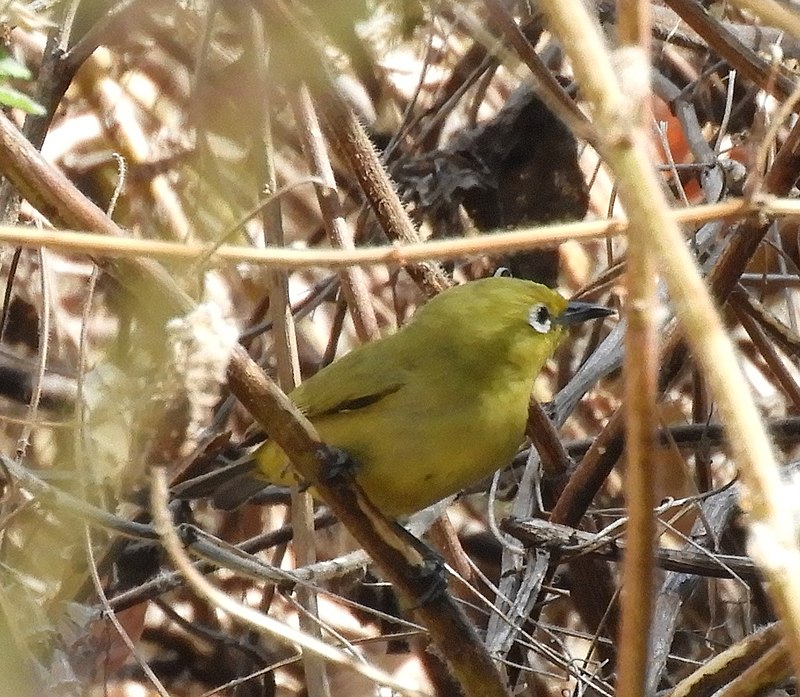
The Canary white-eye bird is endemic to subtropical or tropical mangrove forests in northern Australia. This small bird has a bright olive back and yellow underparts, and its distinguishing feature is a circle of white feathers around its eye.
This species is also known as the yellow white-eye due to its yellow coloring. Zosterops luteus is a beautiful sight to behold as the ring of silver-white feathers around its eye adds to its charm.
This bird species is an integral part of the ecosystem it lives in, contributing to pollination and insect control.
It is fascinating to observe as it flits around the mangroves, filling the air with its sweet, chirping calls.
In short, the Canary white-eye is a fascinating bird species worth seeing when visiting northern Australia’s mangrove forests.Scientific classification:
| Kingdom | Animalia |
| Phylum | Chordata |
| Class | Aves |
| Order | Passeriformes |
| Family | Zosteropidae |
| Genus | Zosterops |
| Species | Z. luteus |
24. White-Plumed Honeyeater
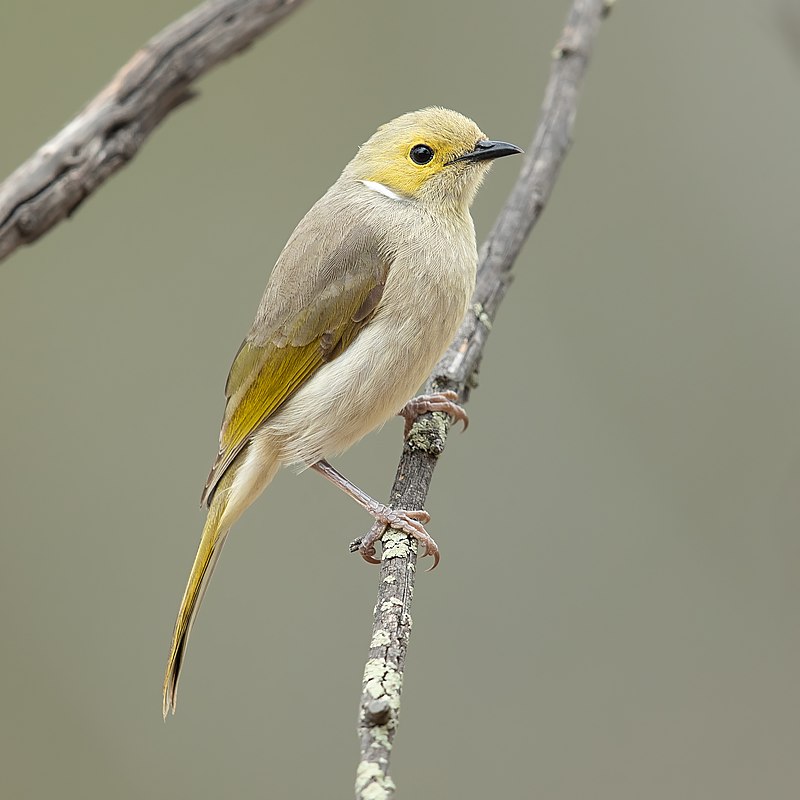
The White-plumed honeyeater is a tiny bird species found only in Australia. It is most commonly found around water sources and can often be seen in suburban areas with enough vegetation cover.
The bird was first identified in 1837 by English naturalist John Gould, who examined a specimen from the interior of New South Wales. The bird is known for its distinct white plumes that adorn its head and give it its name.
Despite its small size, the White-plumed honeyeater is widely spread and common in its native habitat.Scientific classification:
| Kingdom | Animalia |
| Phylum | Chordata |
| Class | Aves |
| Order | Passeriformes |
| Family | Meliphagidae |
| Genus | Ptilotula |
| Species | P. penicillata |
25. Red Wattlebird
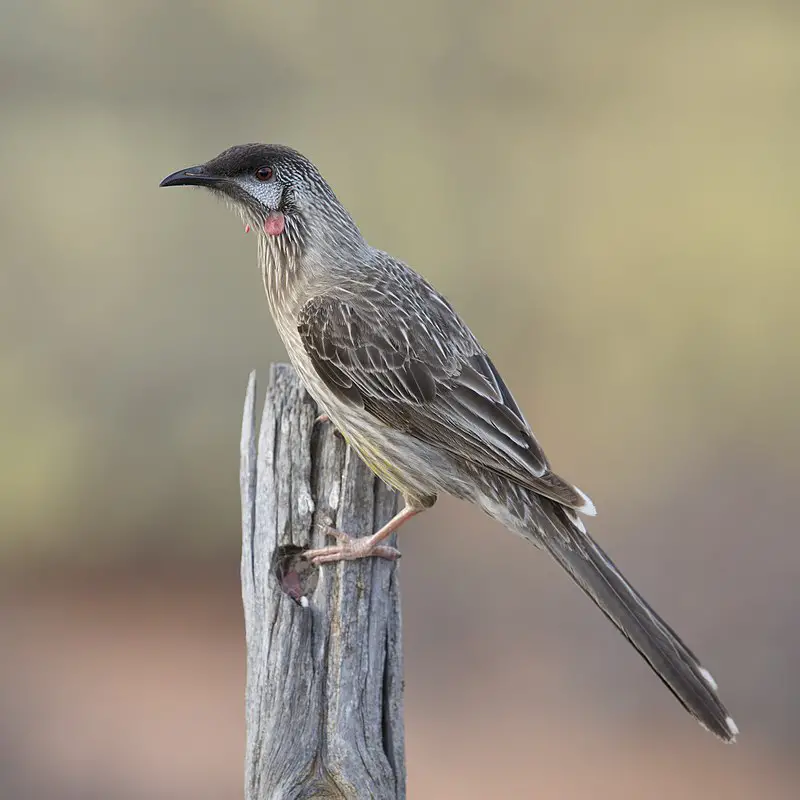
The Red Wattlebird is a large honeyeater found in southern Australia. It has grey-brown feathers, red eyes, and pinkish-red wattles on its neck.
The bird also has white streaks on its chest and a bright yellow patch on its belly.
It measures 33-37 cm in length, making it the second largest Australian honeyeater. The male and female birds have similar physical characteristics.Scientific classification:
| Kingdom | Animalia |
| Phylum | Chordata |
| Class | Aves |
| Order | Passeriformes |
| Family | Meliphagidae |
| Genus | Anthochaera |
| Species | A. carunculata |
Also Featured In: Sydney Birds You Need to See, New South Wales Birds You Need to See
26. Grey Fantail
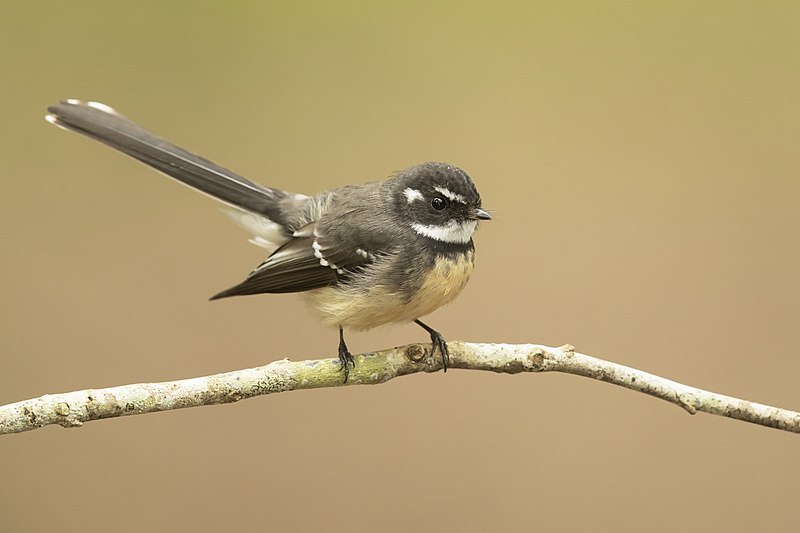
The grey fantail is a tiny bird that primarily eats insects. It has no sexual distinctions, and it may be discovered in Australia, the Solomon Islands, Vanuatu, and New Caledonia.
Although some scientists believe it is the same as the New Zealand fantail for various reasons, including similarities in appearance, others believe it should be classified as a distinct species.
One of the distinguishing features has to do with the bird’s calls. The grey fantail is a prevalent species among bird enthusiasts due to their ability to learn new things and interact with their surroundings.
They are clever birds that enjoy playing and perching on trees. The grey fantail’s habitat comprises woodlands, shrublands, and forests, particularly near bodies of water.
Overall, this species is a delightful addition to any bird lover’s collection.Scientific classification:
| Kingdom | Animalia |
| Phylum | Chordata |
| Class | Aves |
| Order | Passeriformes |
| Family | Rhipiduridae |
| Genus | Rhipidura |
| Species | R. albiscapa |
Also Featured In: Birds that Live in Sunshine Coast, Small Birds that Live in New South Wales
27. Purple-Gaped Honeyeater
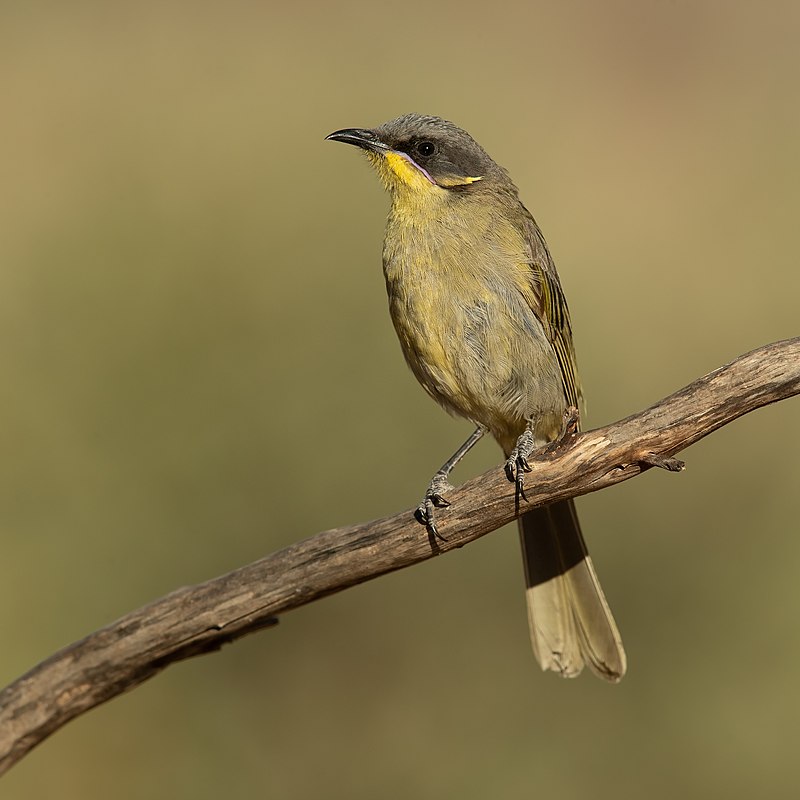
The Purple-gaped honeyeater is a bird species found in southern Australia. It lives in mallee, tall heath, and low eucalypt woodland areas.
The bird is medium-sized, and its body is generally grey-olive above and buffish yellow below.
Its head is patterned. The bird’s name is derived from the purple coloration in its gape, which is the inside of its mouth.
This species is part of the Meliphagidae family, and it is known for feeding mainly on nectar, insects, and pollen.
The Purple-gaped honeyeater is endemic to Australia, meaning it is only found there. Its natural habitat is under threat due to habitat destruction, and the bird’s populations are decreasing.Scientific classification:
| Kingdom | Animalia |
| Phylum | Chordata |
| Class | Aves |
| Order | Passeriformes |
| Family | Meliphagidae |
| Genus | Lichenostomus |
| Species | L. cratitius |
Also Featured In: Birds that Live in Kangaroo Island,
28. Grey Currawong
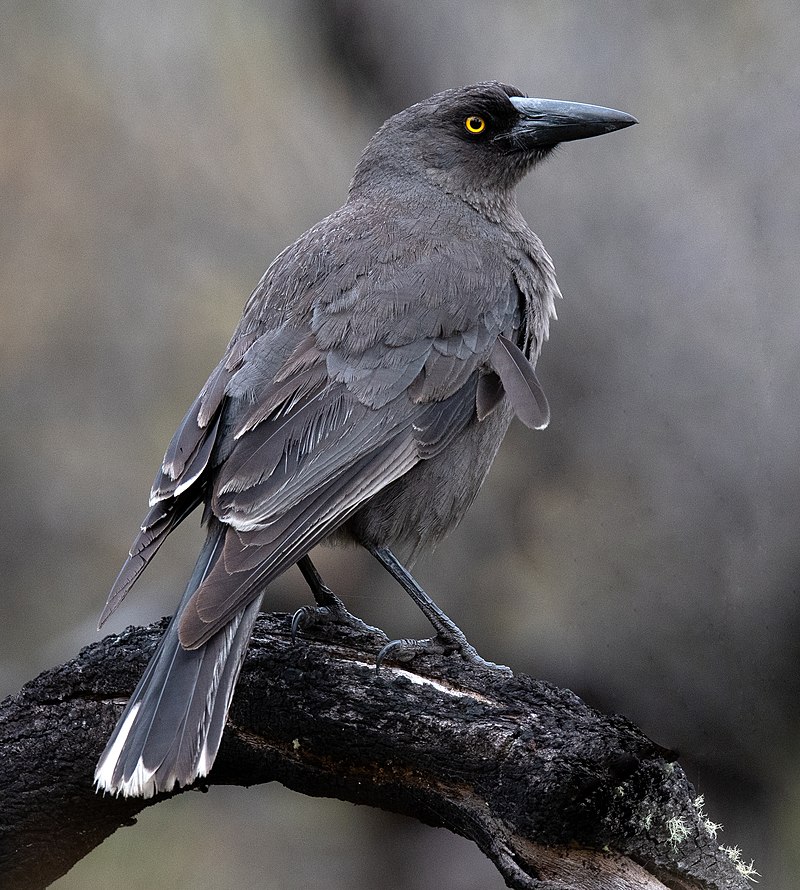
The Grey currawong is a bird that belongs to the Strepera genus and is widely found in southern Australia, along with Tasmania.
This sizeable passerine bird, measuring an average of 48 cm, is similar to a crow with a heavy bill, dark plumage, and a white undertail.
Interestingly, this bird has yellow irises that further enhance its striking appearance.
The Grey currawong is one of the three currawong species and has close relations with the Australian magpie and butcherbirds belonging to the Artamidae family.
Despite its size and crow-like appearance, this bird is widely found in Australia, and its recognizable call is a familiar sound to many Australians.
Overall, this distinctive bird is a sight to behold and an essential part of Australia’s diverse birdlife.Scientific classification:
| Kingdom | Animalia |
| Phylum | Chordata |
| Class | Aves |
| Order | Passeriformes |
| Family | Artamidae |
| Genus | Strepera |
| Species | S. versicolor |
29. Red-Winged Fairywren
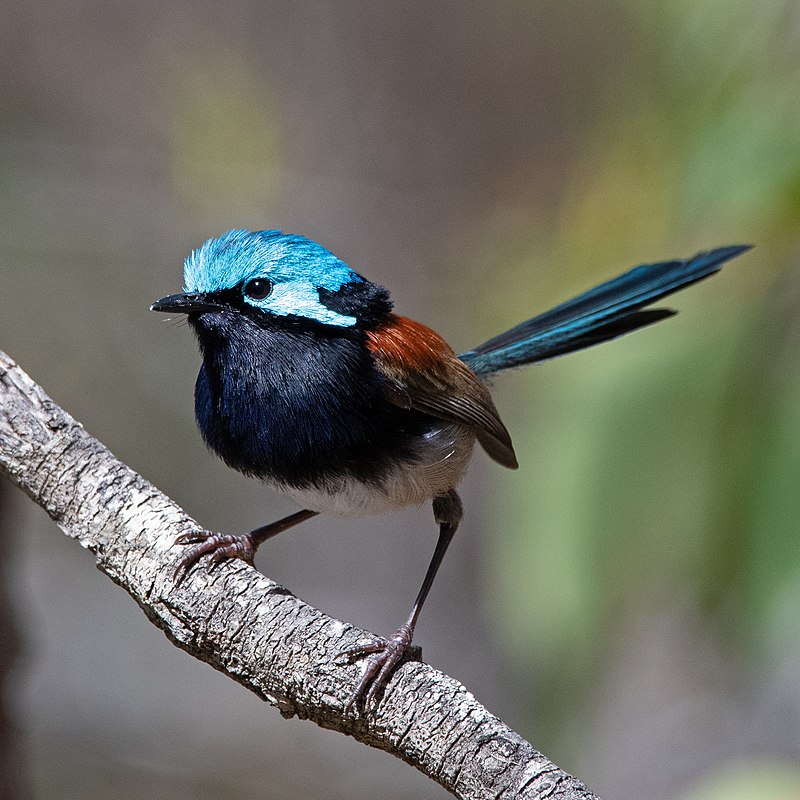
The Red-winged fairywren is a passerine bird found only in southwestern Western Australia.
This non-migratory species exhibits significant sexual dimorphism, as males have a strikingly colored breeding plumage with a silvery-blue crown, ear coverts, and upper back, along with red shoulders, while females have duller plumage.
Fairywrens are known for their complex social behavior, and these birds also have a unique mating system in which males are typically promiscuous with multiple females, who then form social bonds with one another.
Despite the bright colors of the males, they are actually quite difficult to spot in their natural habitat, frequently hiding in thick shrubs, so finding them takes patience and keen observation skills.
Overall, the Red-winged fairywren is a stunning example of the unique and diverse birdlife found in Australia.Scientific classification:
| Kingdom | Animalia |
| Phylum | Chordata |
| Class | Aves |
| Order | Passeriformes |
| Family | Maluridae |
| Genus | Malurus |
| Species | M. elegans |
30. Western Rosella
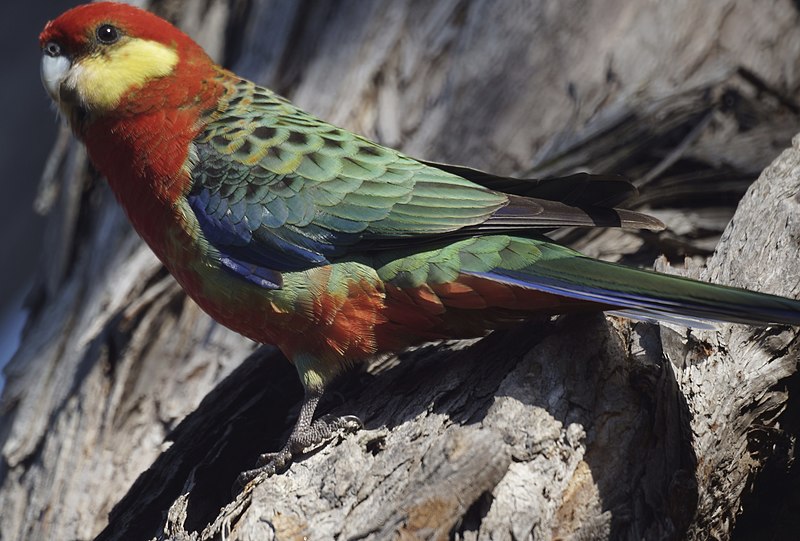
The Western Rosella, also called Moyadong, is a parrot species endemic to southwestern Australia. It has a bright red head and underparts, while its back is mottled black.
The species can be distinguished from others in the Platycercus genus by the yellow patch at its cheek. Adult Western Rosellas exhibit sexual dimorphism, with females being less vibrant than males.
Juvenile birds lack the striking colors of mature birds. The Western Rosella is a beautiful bird with a unique coloration that makes it easily recognizable.
Its endemic status makes it an important part of the Australian ecosystem, and efforts are being made to protect its habitat and preserve the population.Scientific classification:
| Kingdom | Animalia |
| Phylum | Chordata |
| Class | Aves |
| Order | Psittaciformes |
| Family | Psittaculidae |
| Genus | Platycercus |
| Species | P. icterotis |
31. Baudin’s Black Cockatoo
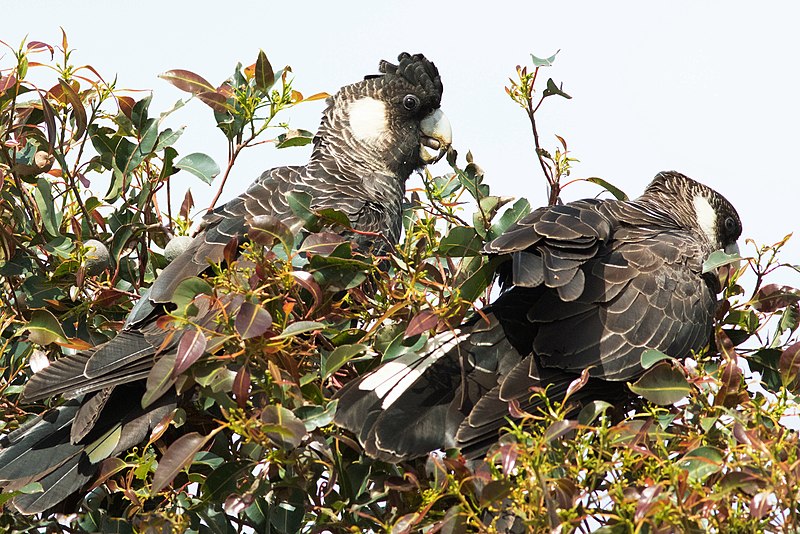
Baudin’s black cockatoo is a type of cockatoo found in southwest Australia. Its greyish black plumage is accentuated by prominent white cheek patches and a white tail band.
It is also known as the long-billed black cockatoo, because of its distinctively long beak. The species is named after French explorer Nicolas Baudin. These birds have short crests on the top of their heads.
Their feathers are edged with a softer shade that contrasts with the dominant black, lending the species a striking appearance.
Baudin’s black cockatoos are charismatic and intelligent birds that are popular among bird enthusiasts.
They are often kept as pets, but their wild populations are increasingly threatened by habitat destruction and climate change.Scientific classification:
| Kingdom | Animalia |
| Phylum | Chordata |
| Class | Aves |
| Order | Psittaciformes |
| Family | Cacatuidae |
| Genus | Zanda |
| Species | Z. baudinii |
32. Black-Tailed Nativehen
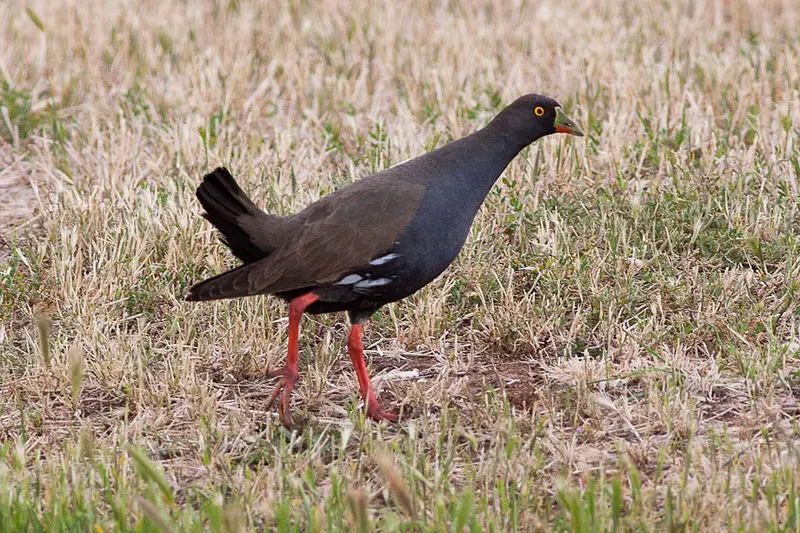
The Black-tailed nativehen is a bird species that is native to Australia. This rail species is quite large and can grow up to 38 cm long and weigh up to 400g.
The bird has brownish-grey and green feathers, and it’s most noticeable feature are its long legs and lower jaw, which are a bright pink-orange color. The bird’s eyes are also quite bright and are more of a bright red color.
One unique characteristic of the Black-tailed nativehen is that it has an erect tail, which stands out from the rest of its body. This bird prefers to live in wetlands and marshes where it can easily forage for food.
Despite its abundant population, this bird is not typically kept or raised in captivity, making it more of a rare sighting for bird watchers to enjoy.Scientific classification:
| Kingdom | Animalia |
| Phylum | Chordata |
| Class | Aves |
| Order | Gruiformes |
| Family | Rallidae |
| Genus | Tribonyx |
| Species | T. ventralis |
Also Featured In: Black Birds in New Zealand,
33. Brown Honeyeater
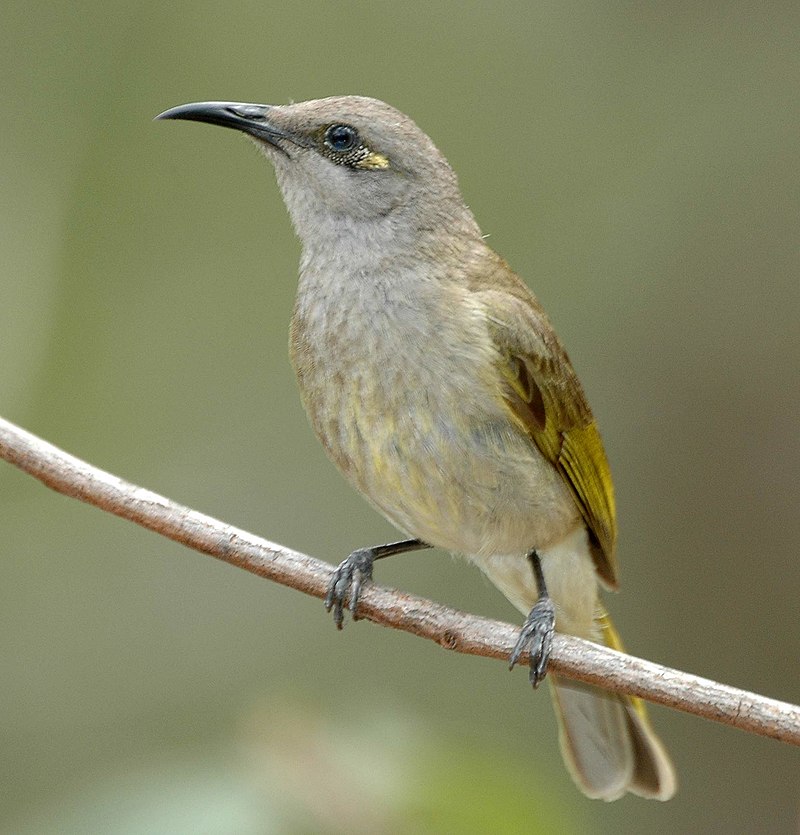
The brown honeyeater is a bird species belonging to the Meliphagidae family. With their brush-tipped tongues, they are adapted for nectar feeding. Honeyeaters are found mainly in Australia, New Guinea, and parts of Indonesia.
However, the brown honeyeater is unique in that it is also found on the island of Bali, making it the only honeyeater species to occur there.
The bird has brown plumage, which helps it to blend in with its surroundings, enabling it to evade detection by predators.
Brown honeyeaters feed on insects and nectar found in the flowers of various plant species. The species is known for its melodious calls and is a common sight in gardens, parks, and open woodlands.
Despite being widespread, the brown honeyeater is not considered endangered.Scientific classification:
| Kingdom | Animalia |
| Phylum | Chordata |
| Class | Aves |
| Order | Passeriformes |
| Family | Meliphagidae |
| Genus | Lichmera |
| Species | L. indistincta |
Also Featured In: Common Townsville Birds, Common Birds of Lombok
34. Western Corella
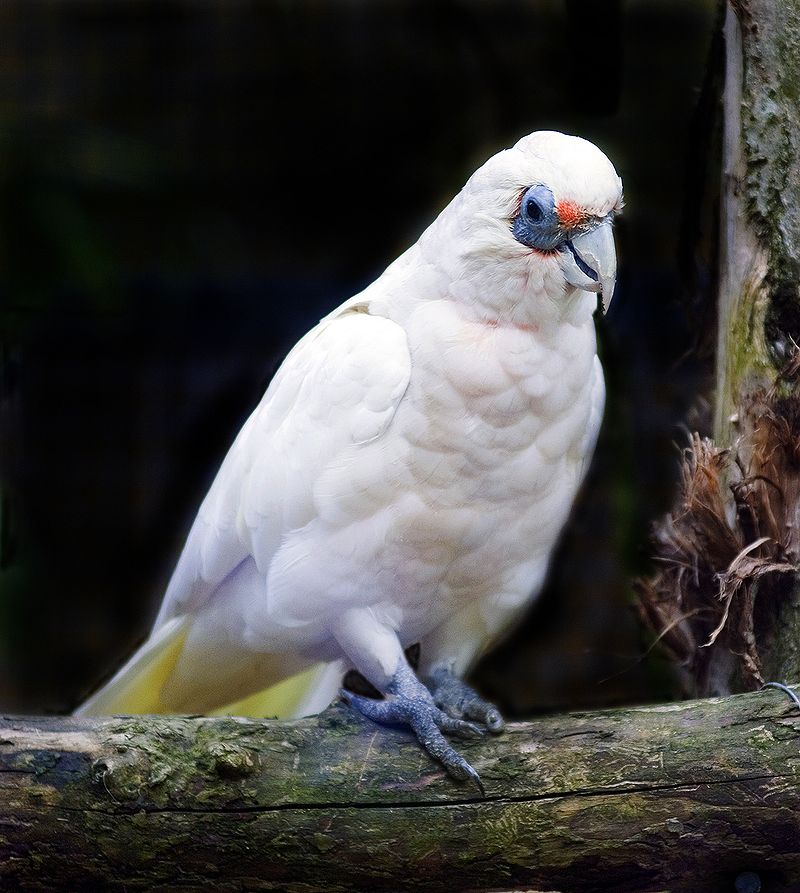
The Western Corella is a beautiful species of cockatoo that is found only in southwestern Australia. With its stunning white plumage and distinctive long bill, this bird is truly a sight to behold.
These birds belong to the family Cacatuidae, which is one of three families in the Psittaciformes order. One of the unique features of this bird is its crest, which sets it apart from other parrots.
Additionally, the Western Corella lacks the green dyck-texture that can be seen in some other parrot species.
As an endemic species, the Western Corella is an important part of the ecosystem in southwestern Australia, and it is essential that we work to protect and preserve these beautiful birds for generations to come.Scientific classification:
| Kingdom | Animalia |
| Phylum | Chordata |
| Class | Aves |
| Order | Psittaciformes |
| Family | Cacatuidae |
| Genus | Cacatua |
| Subgenus | Licmetis |
| Species | C. pastinator |
35. Singing Honeyeater
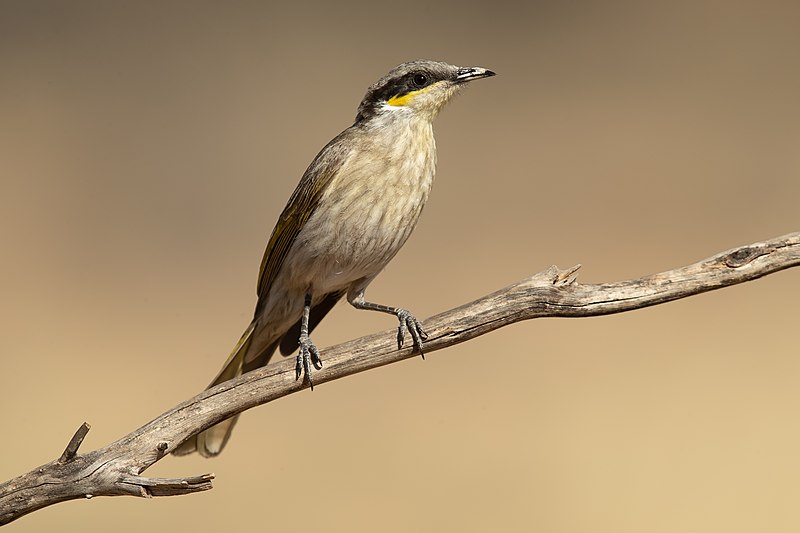
The Singing honeyeater bird is a small Avian species that belongs to the Meliphagidae family. It can be found in several different habitats including shrubland, woodland, and coastal regions.
The bird is prevalent and can be found throughout Australia west of the Great Dividing Range, and stretches to the west coast and Western Australian islands. Although it is widespread, this species is not found in Tasmania.
The name of this bird is derived from its beautiful and melodious singing that is often heard in the early morning. Singing honeyeaters are known to be a crucial species in the ecosystem as they help in pollination and seed dispersal.
These birds are known for their unique plumage, which is a mix of green and yellow, making them easily distinguishable from other species.Scientific classification:
| Kingdom | Animalia |
| Phylum | Chordata |
| Class | Aves |
| Order | Passeriformes |
| Family | Meliphagidae |
| Genus | Gavicalis |
| Species | G. virescens |
36. Blue-Breasted Fairywren
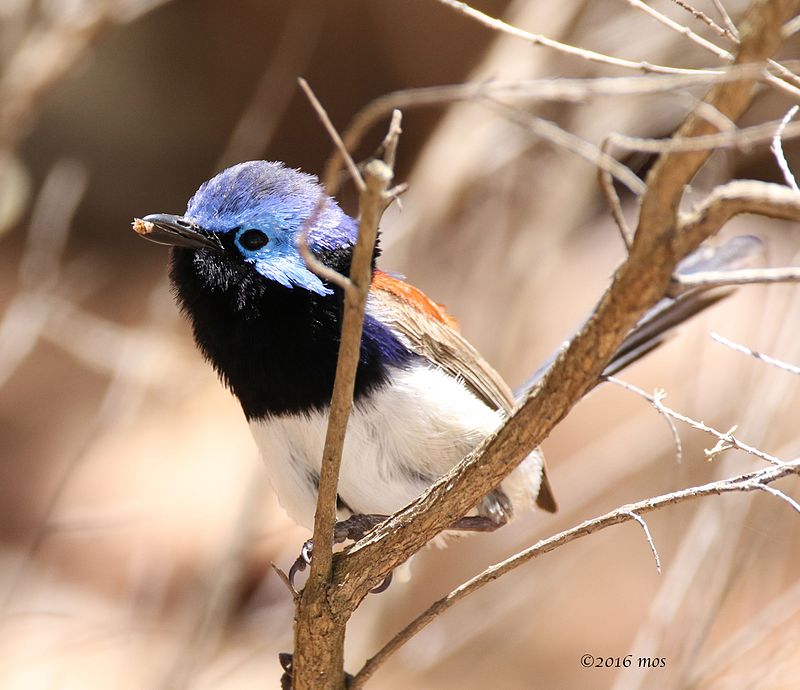
The Blue-breasted fairywren is a non-migratory bird found only in southern Western Australia and the Eyre Peninsula in South Australia. These birds belong to the Maluridae family of passerine birds.
The males exhibit a bright blue crown, ear coverts and breast, with a striking yellow patch on their wings. This bird exhibits a distinct degree of sexual dimorphism, as females are a subdued brown color.
They are typically found in dry eucalypt forests, woodland and scrub areas, and rely on insects and arthropods as their primary food source. In breeding season, the male’s striking coloration peaks, to attract mates.
Despite their distinct characteristics, the Blue-breasted fairywren remains vulnerable due to habitat destruction and predation by cats and foxes. Despite this, scientists say that this bird has potential for recovery if suitable habitat is maintained.Scientific classification:
| Kingdom | Animalia |
| Phylum | Chordata |
| Class | Aves |
| Order | Passeriformes |
| Family | Maluridae |
| Genus | Malurus |
| Species | M. pulcherrimus |
37. Regent Parrot
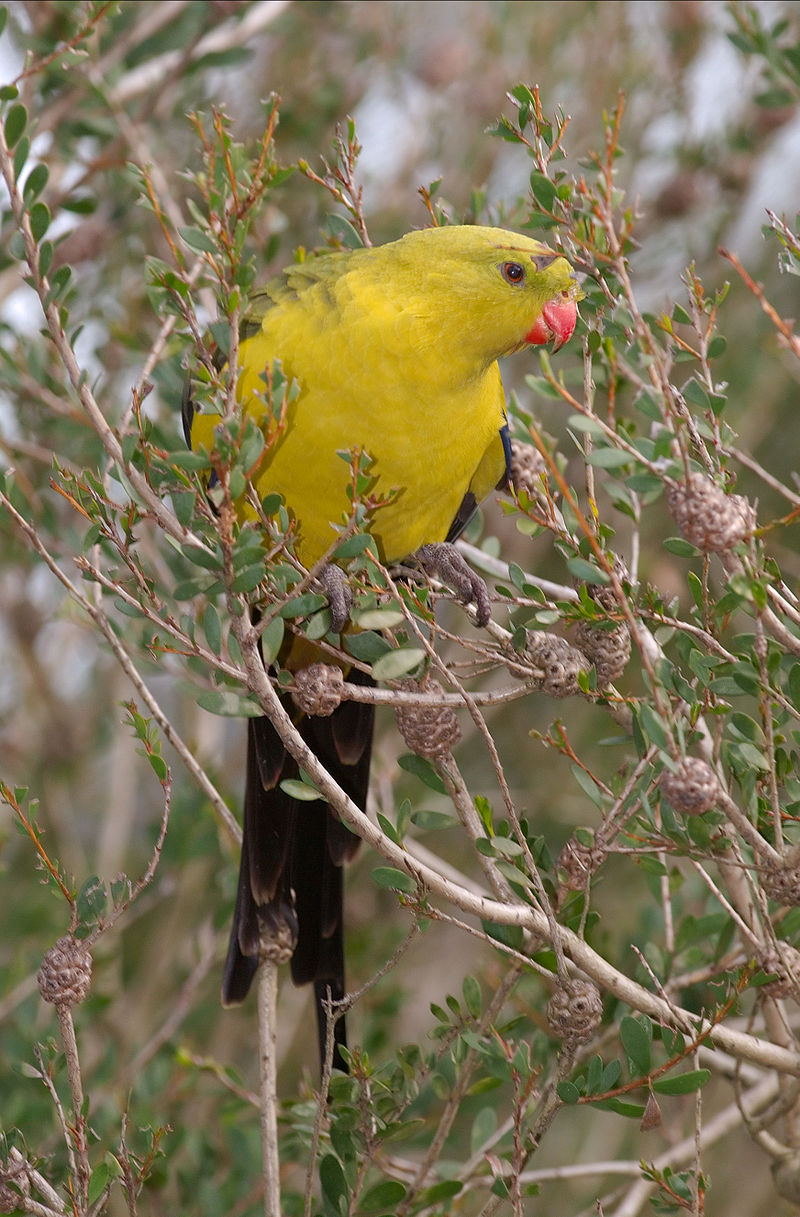
The regent parrot, also known as rock pebbler, is a psittacine bird found in the southern parts of Australia. It has striking yellow plumage with a green tail, and is typically found in eucalyptus groves and wooded areas of subtropical southwestern Australia.
A smaller population can be found in subtropical and temperate southeastern Australia. The regent parrot mainly feeds on seeds, and its diet comprises mostly of them.
This bird is known for its colorful appearance and can be a striking sight when seen in its natural habitat.
Its unique coloration also makes it a popular pet among bird enthusiasts worldwide. Despite its popularity as a pet, it is important to note that the regent parrot is a protected species in Australia, and should not be captured or kept as a pet without legal permission.Scientific classification:
| Kingdom | Animalia |
| Phylum | Chordata |
| Class | Aves |
| Order | Psittaciformes |
| Family | Psittaculidae |
| Genus | Polytelis |
| Species | P. anthopeplus |
38. Rock Parrot
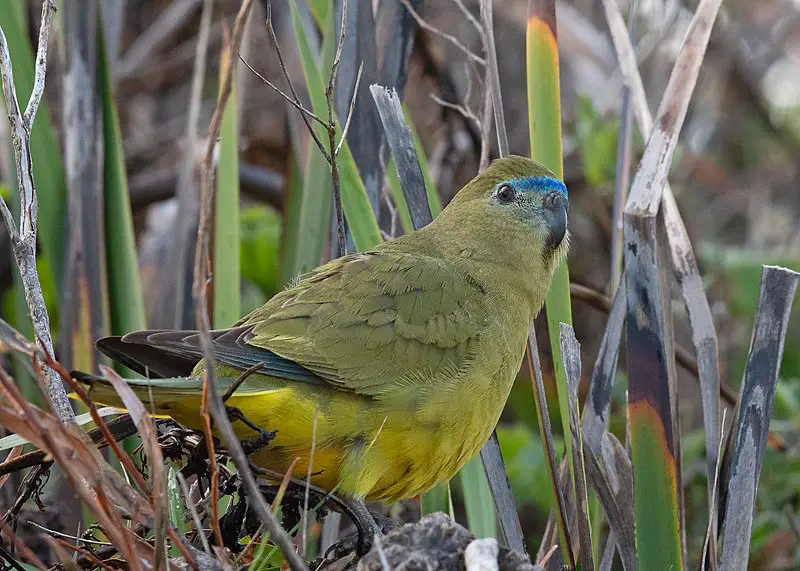
The Rock parrot is a small bird native to Australia. It was described by John Gould in 1841. This parrot is primarily olive-brown with yellowish underparts.
Its head features light blue forecheeks, lores, and a dark blue frontal band line across the crown. The Rock parrot is about 22 to 24 cm long and weighs between 50 and 60 g.Scientific classification:
| Kingdom | Animalia |
| Phylum | Chordata |
| Class | Aves |
| Order | Psittaciformes |
| Family | Psittaculidae |
| Genus | Neophema |
| Species | N. petrophila |
39. Elegant Parrot
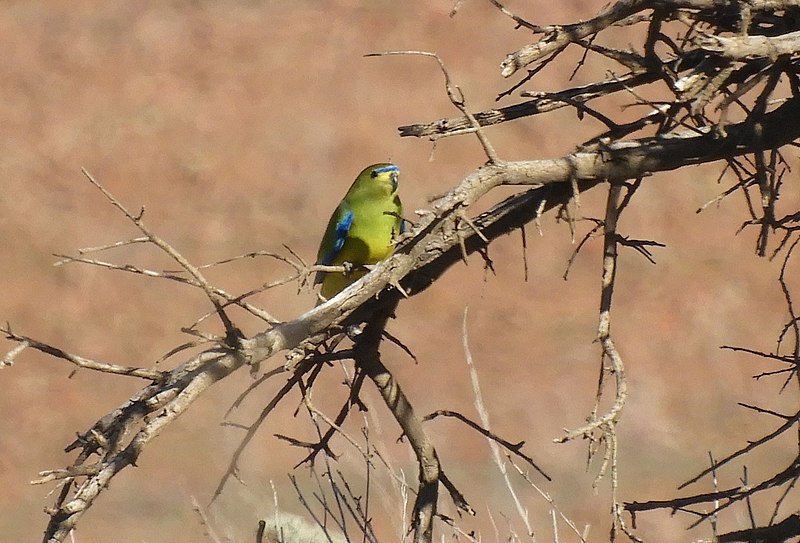
The Elegant Parrot is a beautiful species of parrot found only in Australia. It belongs to the Psittaculidae family and is commonly known as Neophema elegans.
The parrot was given its name by John Gould, a famous ornithologist and artist, in 1837. The species name comes from the Latin word “elegant,” which perfectly describes the bird’s graceful appearance.
Aboriginal peoples referred to it as carteri, bilgir, or koolyederong. The Elegant Parrot is one of six species of grass parrot in the Neophema genus.
Its striking colors, including a bright blue head and wings, make it a popular bird for aviculture.
However, the Elegant Parrot is still considered vulnerable in the wild due to habitat destruction and other threats.Scientific classification:
| Kingdom | Animalia |
| Phylum | Chordata |
| Class | Aves |
| Order | Psittaciformes |
| Family | Psittaculidae |
| Genus | Neophema |
| Species | N. elegans |
40. Western Yellow Robin
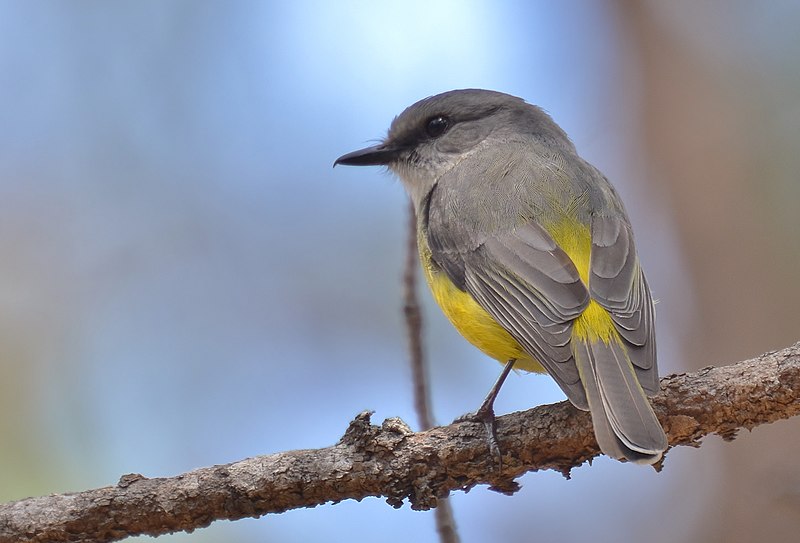
The Western yellow robin is a unique species of bird that belongs to the Petroicidae family. Found primarily in Australia, this bird was first described by John Gould in 1838.
While it may share a name with other robins, it is not closely related to either the European or American robins. Instead, it appears to be an early offshoot of the Passerida group of songbirds.
The Western yellow robin ranges in size between 13.5 and 15 centimeters. Its distinct yellow coloring makes it easy to identify in the wild.
This bird is known for its sweet and melodic songs, which are often heard throughout the Australian bushland.
Its unique appearance and delightful chirps make it a beloved species among birdwatchers around the world.Scientific classification:
| Kingdom | Animalia |
| Phylum | Chordata |
| Class | Aves |
| Order | Passeriformes |
| Family | Petroicidae |
| Genus | Eopsaltria |
| Species | E. griseogularis |
41. Western Gerygone
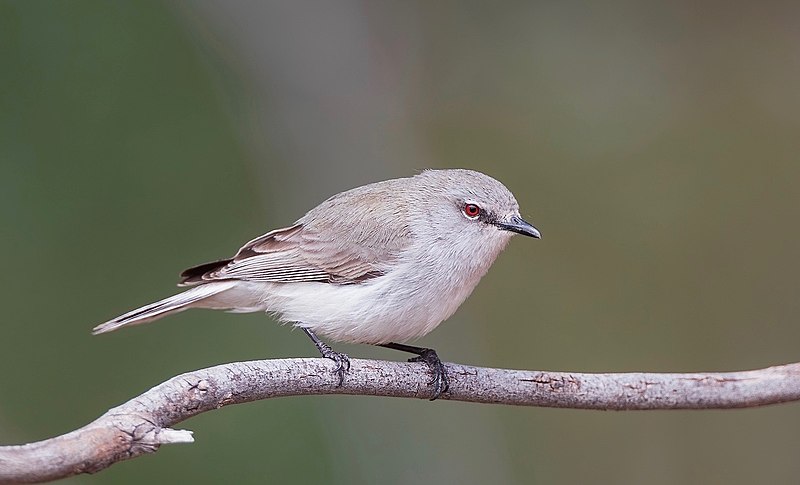
The Western gerygone is a tiny passerine bird found in inland and southwest Australia. It is known for its brownish-grey plumage and is an arboreal insectivore.
This species is commonly found in open forests, woodlands, and dry shrublands. They belong to the family Acanthizidae, which includes Thornbills and Allies.
Despite being such a small bird, they are not currently at risk of extinction (IUCN: Least Concern).
The Western gerygone is a fascinating bird, known for its unique song and calls. It feeds mainly on insects, which it catches while foraging in the canopy of trees.
Observing this species in their natural habitat can be a delightful experience for bird lovers and nature enthusiasts alike.Scientific classification:
| Kingdom | Animalia |
| Phylum | Chordata |
| Class | Aves |
| Order | Passeriformes |
| Family | Acanthizidae |
| Genus | Gerygone |
| Species | G. fusca |
42. White-Breasted Robin
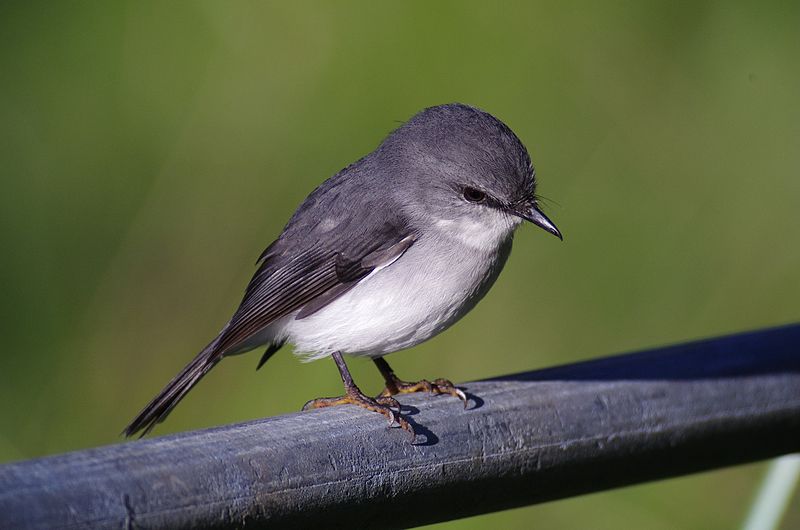
The White-breasted Robin bird is a passerine bird that belongs to the Australasian robin family. Endemic to Southwestern Australia, this bird lacks bright colors in its plumage and is predominantly greyish with white underparts.
Though commonly mistaken for a white-winged chough, this bird can be easily recognized by its distinctive white breast.
It is a small bird that feeds on insects and spiders, and is known for its beautiful melodious calls that echo through the forests.
The breeding of white-breasted robins begins in early August and continues up until late November.
These birds are territorial and choose their mates through a courtship ritual. Due to their unique characteristics and beautiful calls, the White-breasted Robin bird is a beloved species and a treasure of the Australian wilderness.Scientific classification:
| Kingdom | Animalia |
| Phylum | Chordata |
| Class | Aves |
| Order | Passeriformes |
| Family | Petroicidae |
| Genus | Eopsaltria |
| Species | E. georgiana |
43. Rufous Whistler
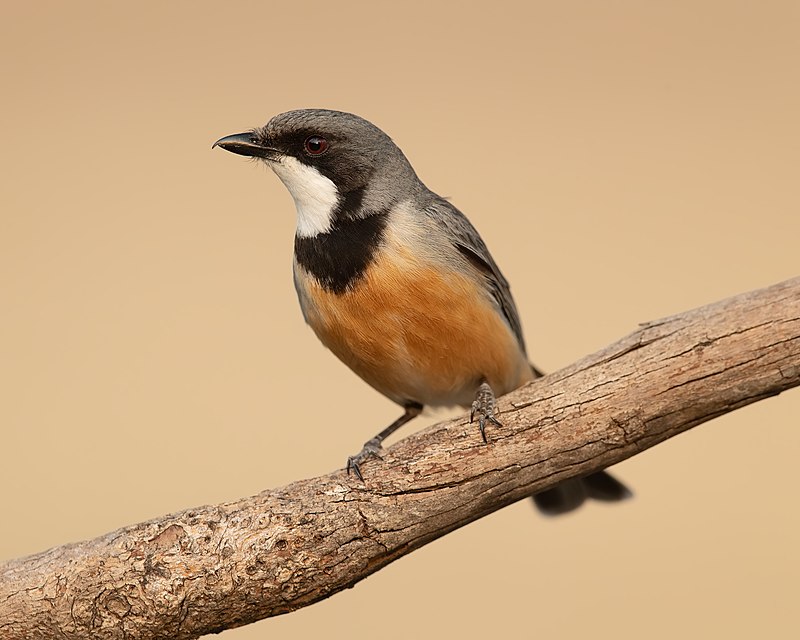
The Rufous whistler has reddish-brown and grey feathers that are not particularly flashy. However, it more than makes up for its subdued appearance with its impressive singing ability.
This bird species can be found in New Caledonia and Australia, where it is known for its variety of melodies and calls.
The Rufous whistler is a member of the Pachycephalidae family, which is known for its many musical calls.
It was initially classified in the Sylvia genus by the English ornithologist J.
Overall, the Rufous whistler is not the most visually striking bird, but its beautiful songs and calls make it a favorite among birdwatchers and nature enthusiasts.Scientific classification:
| Kingdom | Animalia |
| Phylum | Chordata |
| Class | Aves |
| Order | Passeriformes |
| Family | Pachycephalidae |
| Genus | Pachycephala |
| Species | P. rufiventris |
Also Featured In: Birds that Live in Gold Coasts, Birds of New Caledonia
44. Yellow-Rumped Thornbill

The yellow-rumped thornbill is a small brown bird with a unique yellow rump and thin dark bill. It belongs to the genus Acanthiza and is a passerine bird.
The family Pardalotidae was once its home, but it is currently placed in the family Acanthizidae. The bird has four subspecies and is generally found in savannah, scrub, and forest areas.Scientific classification:
| Kingdom | Animalia |
| Phylum | Chordata |
| Class | Aves |
| Order | Passeriformes |
| Family | Acanthizidae |
| Genus | Acanthiza |
| Species | A. chrysorrhoa |
45. White-Cheeked Honeyeater
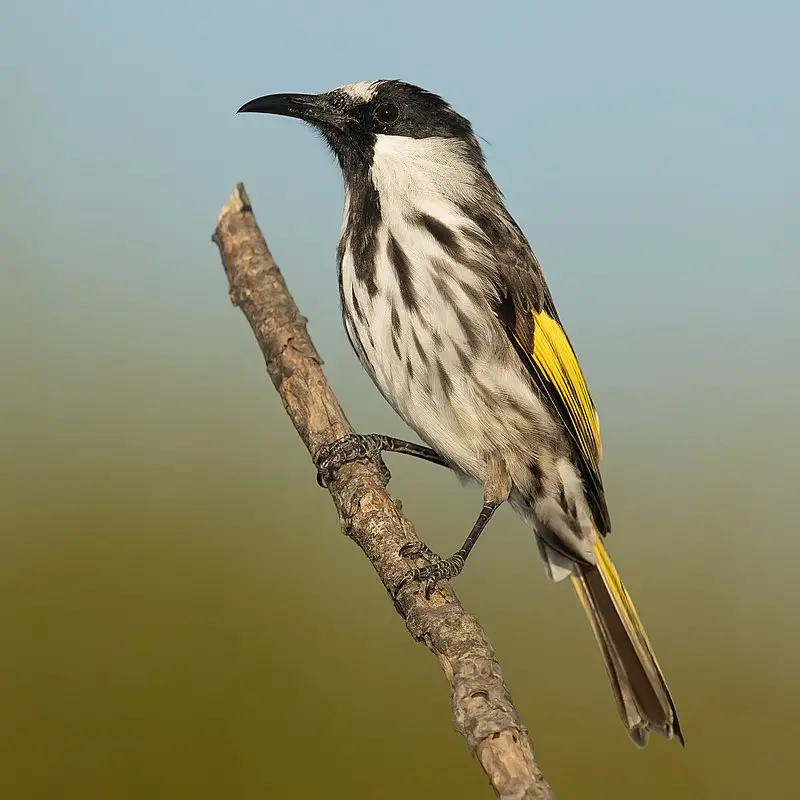
The White-cheeked honeyeater is a bird native to both the east coast and southwest corner of Australia. It is easily identifiable by its large white patch on the cheek, brown eyes, and yellow panel on its wing.
The bird was first described by Bechstein in 1811 and has two recognized subspecies: Phylidonyris niger niger in eastern Australia and P. n. gouldii in the southwestern corner of Western Australia.
These birds can often be seen flitting through the trees and shrubs in search of nectar, insects, and spiders to fuel their energetic lifestyles.
Their unique appearance and active behavior make them a favorite among bird watchers and nature enthusiasts alike.Scientific classification:
| Kingdom | Animalia |
| Phylum | Chordata |
| Class | Aves |
| Order | Passeriformes |
| Family | Meliphagidae |
| Genus | Phylidonyris |
| Species | P. niger |
46. Western Thornbill
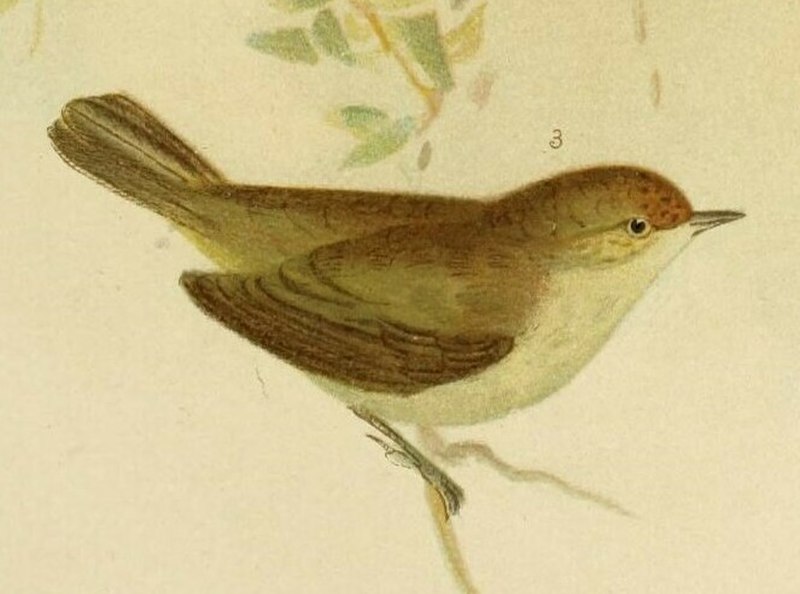
The Western thornbill is a bird found only in the southwestern region of Australia. It belongs to the Acanthizidae family and prefers to live in Mediterranean-type shrubby vegetation.
The species is known for its distinct appearance marked by sharp, thorn-like feathers around its head, which sets it apart from other birds.
The Western thornbill is a small yet active bird and can be seen fluttering in and out of foliage while foraging for insects, spiders, and other small invertebrates.
Its delicate appearance belies the bird’s ability to adapt to changing environments and weather conditions.
Despite its small size, the Western thornbill is a tenacious and hardy bird species that has become an important part of the southwestern Australia ecosystem.Scientific classification:
| Kingdom | Animalia |
| Phylum | Chordata |
| Class | Aves |
| Order | Passeriformes |
| Family | Acanthizidae |
| Genus | Acanthiza |
| Species | A. inornata |
47. Princess Parrot
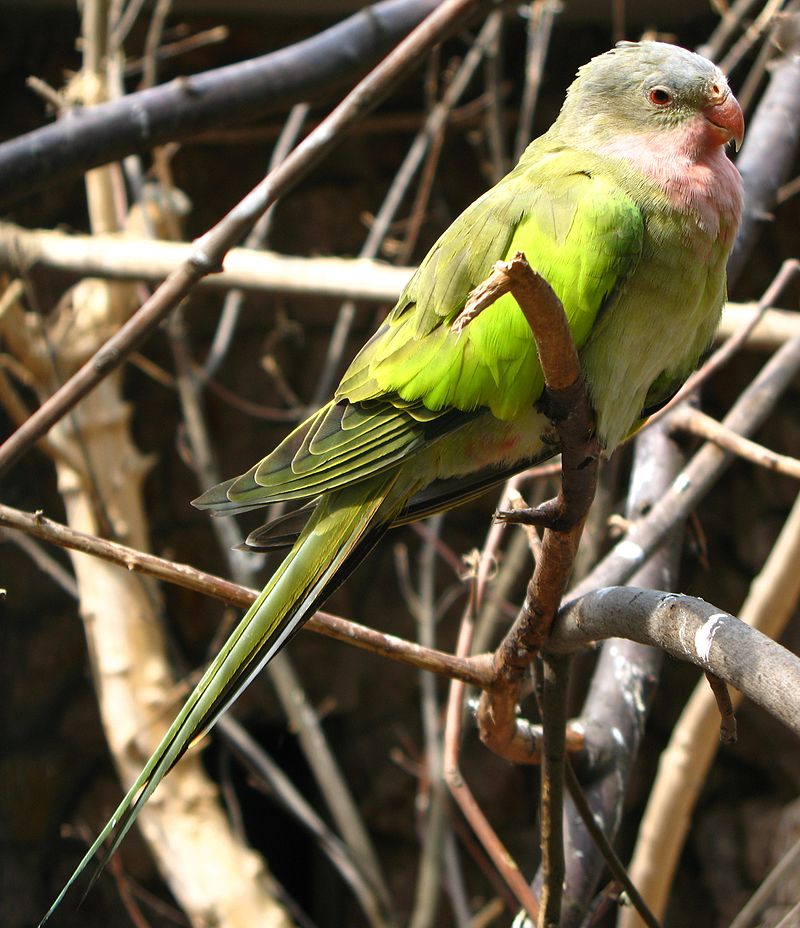
The Princess Parrot is a vibrant bird native to Australia belonging to the parrot family. It was named in honor of Princess Alexandra of Denmark after her marriage to Prince Edward VII.
This parrot species is also known as Queen Alexandra parrot, Alexandra’s parakeet, Princess of Wales parakeet or rose-throated parrot. The bird’s stunningly-colored feathers make it highly sought-after in the pet trade.
In the wild, it can be found in arid and semi-arid regions where it feeds on seeds, fruits, and insects.
The Princess Parrot is highly social and forms flocks during the breeding season. It lays its eggs in the hollows of trees, and both male and female birds share incubation duties.
Though not classified as an endangered species, it is still vulnerable due to habitat loss caused by land clearing and agriculture.Scientific classification:
| Kingdom | Animalia |
| Phylum | Chordata |
| Class | Aves |
| Order | Psittaciformes |
| Family | Psittaculidae |
| Genus | Polytelis |
| Species | P. alexandrae |
48. Scarlet-Chested Parrot
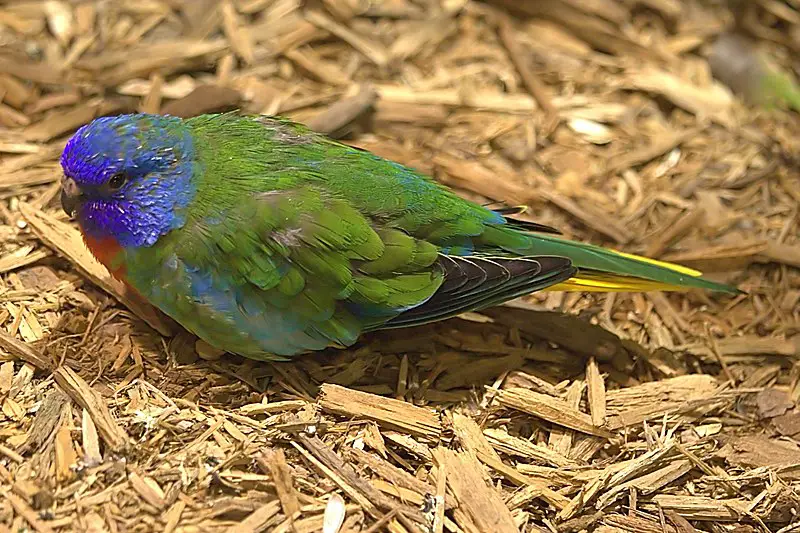
The Scarlet-chested parrot is a brightly colored bird that is native to central South Australia and inland southern Western Australia.
This species is also known as the scarlet-breasted parrot, orange-throated parrot, or splendid parrot.
Male Scarlet-chested parrots have a striking blue face, scarlet chest, and yellow underparts, surrounded by green plumage.
In contrast, females have similar coloring but lack the scarlet chest. Scarlet-chested parrots are sexually dimorphic, with distinct physical differences between genders.
These colorful birds are a delight to observe, and they typically live in arid or semi-arid habitats. Scarlet-chested parrots feed on seeds, fruits, and vegetation, and they can often be found in pairs or small groups.
Despite their limited range, these magnificent parrots are highly sought after by bird enthusiasts and are a treasured sight for those who are lucky enough to spot them in the wild.Scientific classification:
| Kingdom | Animalia |
| Phylum | Chordata |
| Class | Aves |
| Order | Psittaciformes |
| Family | Psittaculidae |
| Genus | Neophema |
| Species | N. splendida |
49. Musk Duck
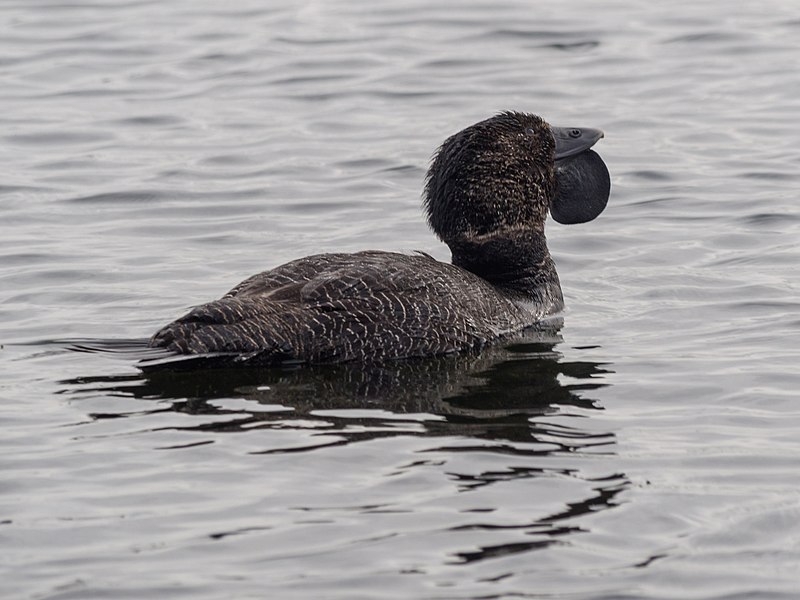
The musk duck is a unique water bird found in southern Australia. It is the only surviving member of the Biziura genus. An extinct relative was once present in New Zealand.
The New Zealand musk duck was larger than the surviving species, with a particularly large head. The musk duck is highly aquatic and has a distinctive stiff tail.Scientific classification:
| Kingdom | Animalia |
| Phylum | Chordata |
| Class | Aves |
| Order | Anseriformes |
| Family | Anatidae |
| Genus | Biziura |
| Species | B. lobata |
Also Featured In: Common Flinders Island Birds,
50. Noisy Scrubbird
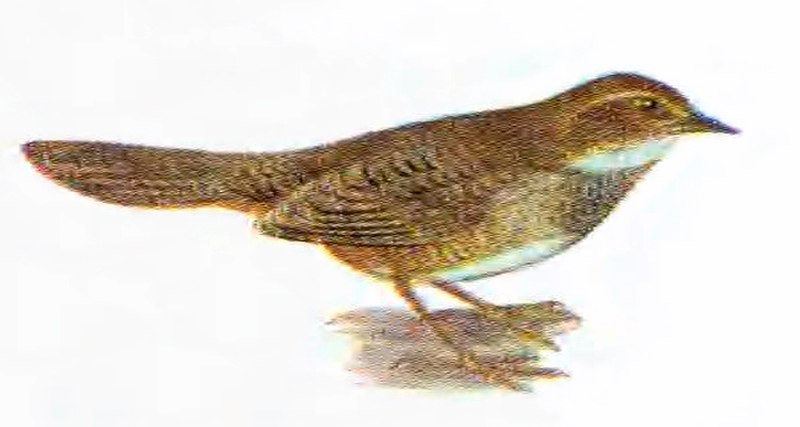
The noisy scrubbird is a unique species of bird found only in the coastal heaths of south-western Australia. With a dark brown back, rust-like wings, and a speckled chestnut breast, it is a fascinating sight to behold.
This bird has a grey-brown or pink bill, and its legs and feet are either brown or silver. Measuring between 19-23 cm, it is relatively small in size.
The noisy scrubbird is part of the Atrichornithidae family, and it is known for its loud and distinctive calls, from which it gets its name.
As an endemic species of southwest Australia, the preservation of the noisy scrubbird’s fragile habitat is crucial to its survival. It is therefore essential to protect the coastal heaths where these remarkable birds thrive.Scientific classification:
| Kingdom | Animalia |
| Phylum | Chordata |
| Class | Aves |
| Order | Passeriformes |
| Family | Atrichornithidae |
| Genus | Atrichornis |
| Species | A. clamosus |
51. Black-Faced Woodswallow
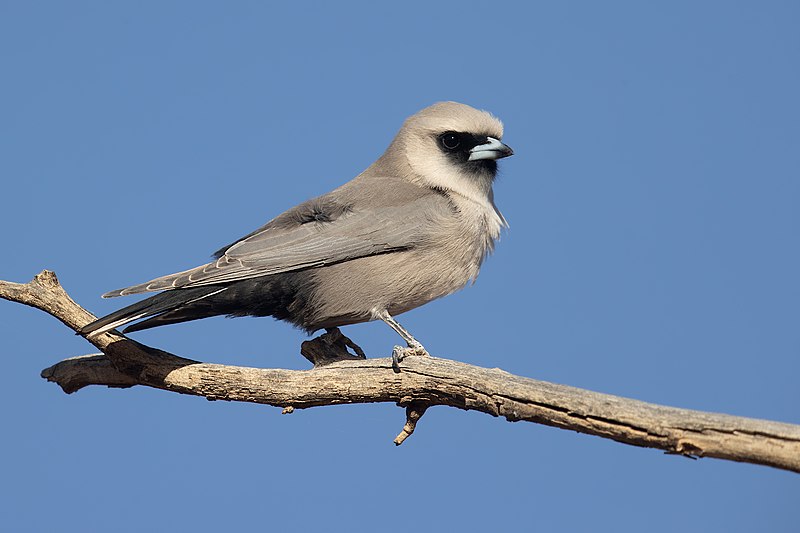
The Black-faced woodswallow is a bird of the Artamidae family, found in Australia, New Guinea, and some Sunda Islands.
This small bird measures around 18-19 cm and is known for its wide distribution across its range.
They have a unique call consisting of chiff, chap, and chattering sounds that can also include vocal mimicry.
The woodswallow’s soft call is a distinctive feature, and they are often found in areas with increased vegetation due to inappropriate fire regimes.
These birds are a valuable part of the ecosystem and contribute to the pollination of plants and control of insect populations.
Their unique features and interesting behavior make them a popular sighting among bird watchers and nature enthusiasts.Scientific classification:
| Kingdom | Animalia |
| Phylum | Chordata |
| Class | Aves |
| Order | Passeriformes |
| Family | Artamidae |
| Genus | Artamus |
| Species | A. cinereus |